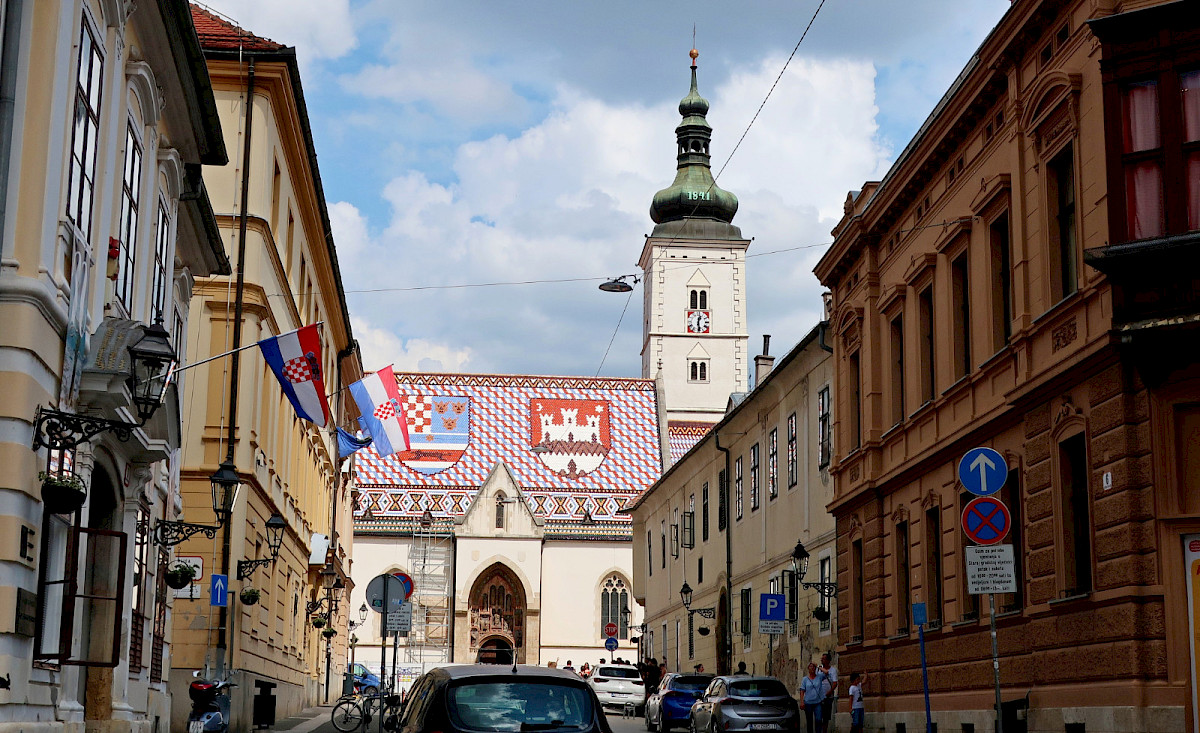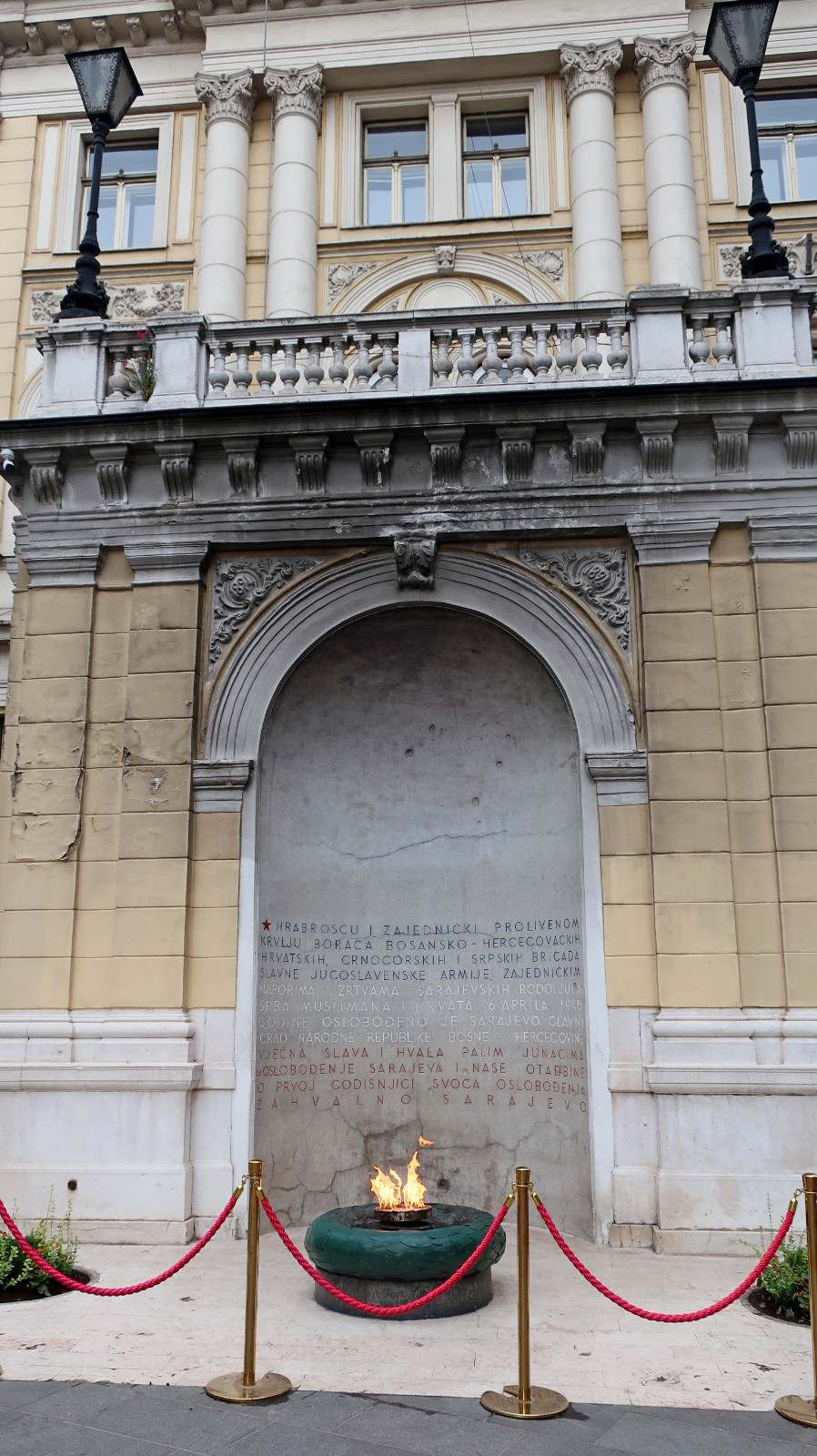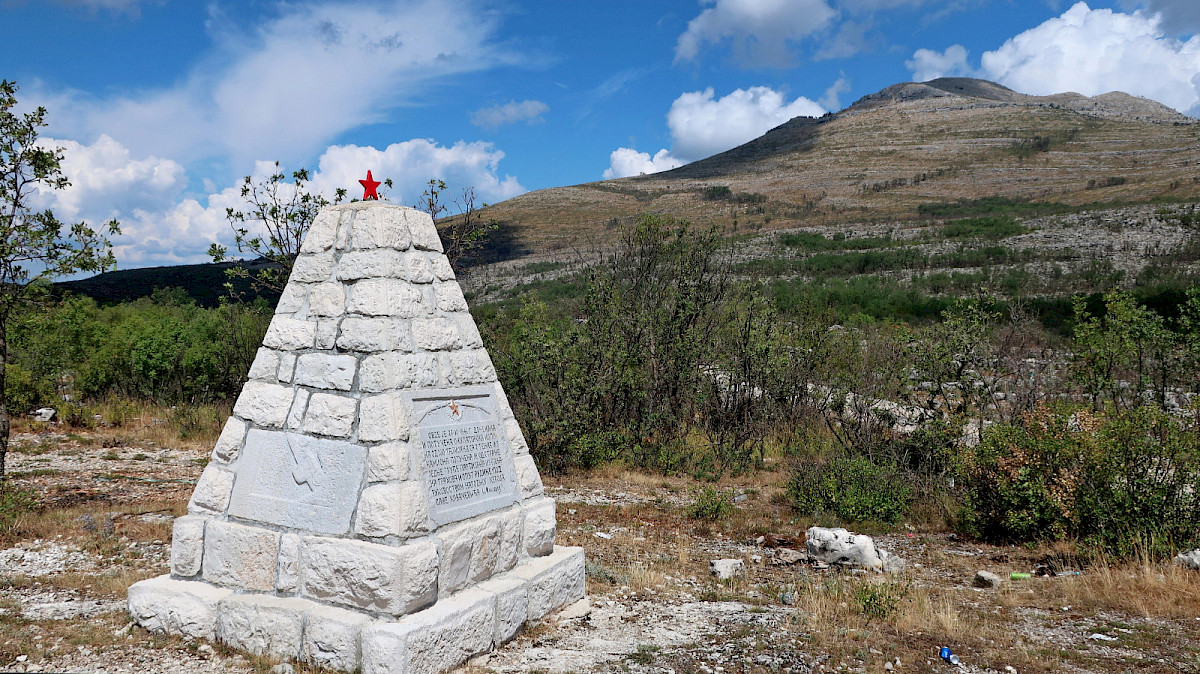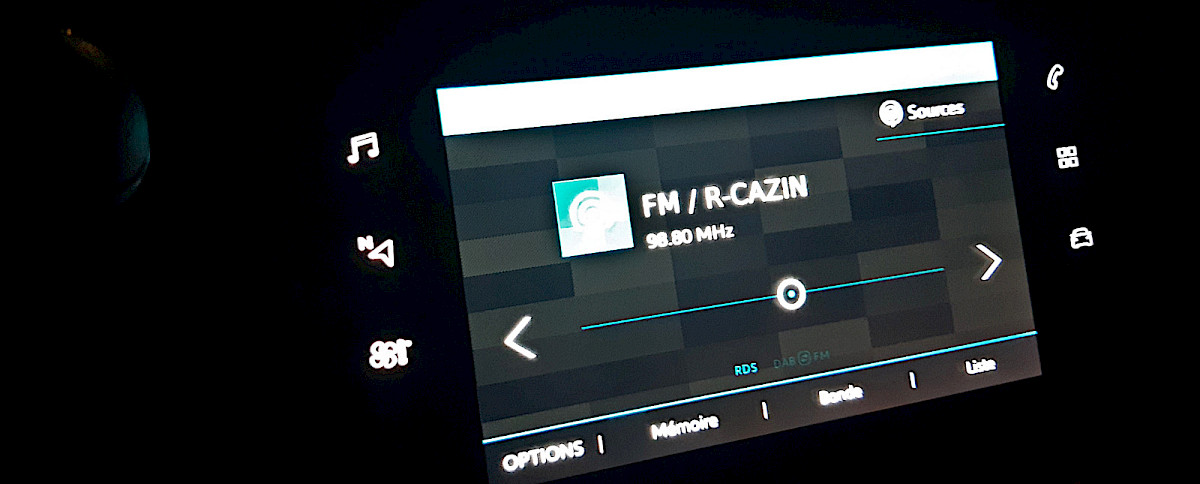Why ex-Yugoslavia ?
travel date: 08/2022 – published: 26/03/2023
I reverse the question : why restrict the journey to Croatia only, on some remarkable sites of the Dalmatian coast only ?
In Croatia, in Bosnia, in Montenegro, as well as the other countries of ex-Yugoslavia, still as of today and despite the sufferings caused by the war in the 1990s, the inhabitants are brotherly peoples, with the same language, and with a culture, traditions and destiny which are still intermingled.
Yes, the Dalmatian coast is worth the journey, it's extraordinary, unique. But not alone. Visiting also the brother countries, meeting also the brotherly peoples, allows for an authentic and rich tourney in the Balkans.
The former Yugoslavia is still on people's minds, with hostility for some, with regret for others. The phenomenon of "Yugonostalgia" is alive in part of the population of these countries. This feeling that a golden age of fraternity and common destiny has vanished, in a country that had its glaring flaws (zero political, press and entrepreneurial freedom) but also its qualities (rather good standard of living for the masses, free studies & health care, freedom to travel to the West, non-alignment with either the West or the USSR) ; in short, a unique case in history of a socialist model that "kind-of worked" at fulfilling the fundamental human needs. And of course, Yugoslavia was this multi-ethnic federation where people lived together in the most natural way with their neighbors, be they Catholic, Orthodox, Muslim, Jewish, ...
When Tito died, the abrupt transition to capitalism was accompanied by a resurgence of nationalism, and the Yugoslav federation, perhaps condemned since its birth due to "wanting to impose" fraternal coexistence, quickly faded away and turned into a nightmare.
So what does "ex-Yugoslavia" look like today? What remains of this golden age of fraternity, which cultural links, in everyday life, and in the minds of people? This is a subject worthy of being touched upon by a trip to these lands. Not as an end in itself, but as a guiding thread, on the road during stops, visits and wanderings.
In Croatia, we're never very far from Bosnia, it is on the other side of the crests. In Dubrovnik, we are less than an hour away from Montenegro. In Montenegro, Bosnia is nearby, to the west.
So, what could be more natural than a trip across these three countries, in accordance with the mood and the feelings of the moment? Oh, there is an obstacle : the hassle of border crossings! Well, the advices to avoid headaches at the borders are detailed below.
Here we go.
Ok, let's go for "the Balkans"... but how to proceed with setting that up ?
Oh, well...as always! Everyone has their own method; here is ours.
First, the structuring questions that must be decided well in advance are the triptych:
- What type of trip, via what main means of transport?
- Basic logistical questions: what dates of arrival and return; which points of arrival and return?
- What are the travel must-haves?
From there, the main lines of the trip can be thought out, little by little. The goal is to be, the day before departure, in a state of preparation where:
- The first night or nights on arrival are reserved.
- A good half of the places to pass are identified; the rest will be decided at the time, on the spot.
- A time sequencing estimate is made, but not set in stone.
- If there are very touristic places requiring reservations in advance, it is to be reserved; this will constitute the obligatory passage and sequencing points.
- The rest will be managed gradually, in order to have the maximum latitude, and to be able to adapt the pace of the trip and the concrete "route" it will eventually take, according to the desires and feelings on the spot.
Our triptych - the purposes of the journey
For us, trip in August 2022, the triptych gave:
- Travel in roaming. In Central Europe, the most "pragmatic" means of transport is the rental car, so this will be a road trip, supplemented by the bus when it is more suitable, and some boat when it comes to reaching an island 🙂.
- Three-week trip (19 days), arrival in Dubrovnik (Croatia), return from Zagreb (Croatia).
- The must-haves of the trip:
- Croatia - 1 : The Dalmatian coast: Its emblematic cities, with Venetian and ancient influences (at least Dubrovnik, Split, Zadar); the mountain side, overlooking the coast; and an island getaway.
- Croatia - 2 : One of the national parks with one-of-a-kind waterfalls.
- Croatia - 3 : Zagreb, the Mediterranean but also Austro-Hungarian.
- Bosnia - 1 : Mostar, the crossroads of cultures.
- Bosnia - 2 : Take the time to understand what life is like in Bosnia.
- Montenegro - 1 : Extension of the Dalmatian coast, to the mouths of Kotor.
- Montenegro - 2 : Travel to a predominantly Orthodox land.
- Croatia or Bosnia or Montenegro : At least one big day hike, in the mountains.
on the eve of the trip...
On the eve of the trip, the outline had taken shape:
It will form a "figure eight" shape,
- departing from Dubrovnik (the 2 nights are booked in advance),
- then extending to Montenegro at Kotor,
- then going back to Orthodox land in the Montenegrin hinterland,
- then passing through Bosnia to reach Mostar,
- then returning to Croatia to follow the Dalmatian coast, via Split and Zadar, with a mini-stay on one of the islands on the coast,
- then going up to one of the national parks to the waterfalls,
- to then switch back to Bosnia on a route to be determined,
- and finally return the rental car, and join Zabreg by bus, for the end of the stay before returning to France.
And this leaves us 3 "free" days that we can use at will to emphasize where we feel good.
at the end of the trip...
At the end of the trip, here is the concrete shape of our itinerary :
And here is how the theoretical plan eventually got realized in practice :
| The plan before starting | The trip as it took place | If it were to be done again |
|---|---|---|
|
Croatia - 1 :
|
Croatia - 1.a - the Dalmatian coast (Dubrovnik) :
Croatia - 1.b - the Dalmatian coast (continued) :
|
Croatia - 1 : Also having time to:
|
|
Croatia - 2 :
|
|
Croatia - 2 :
|
|
Croatia - 3 :
|
|
Croatia - 3 :
|
|
Bosnia - 1 :
|
|
Bosnia - 1 :
|
|
Bosnia - 2 :
|
|
Bosnia - 2 :
|
|
Montenegro - 1 :
|
|
Montenegro - 1 :
|
|
Montenegro - 2 :
|
|
Montenegro - 2 :
|
|
Croatia or Bosnia or Montenegro :
|
Croatia or Bosnia or Montenegro :
|
Croatia or Bosnie or Montenegro : Also having time for :
|
What does everyday life look like
We are at the heart of Europe. No culture shock to be expected. Some may be relieved, others disappointed, but even in the remote countryside, we are not in the crazy universe of the romanticized Balkans filmed by Emir Kusturica. The standard of living is certainly not ours, but it is not that far off.
A common point, throughout the journey, is that there reigns a tranquility which is unusual for us. Almost a serenity; we "feel" that nothing bad can happen to us, wherever we are. You really have to go to Split or Hvar to "find" a touch of hype atmosphere, which is just as pleasant to find on arrival as to leave when departing.
Not only "nothing bad can happen", but also good things are granted to happen : people are just very welcoming, throughout the countries. Want to have a chat about how life is ? Just take a break by leaving the main road, and make a stop at the terrace of a bar where locals are chatting ; chances are that you'll get adopted.
There is a cultural difference however, but it is more subtle. To understand this, a little historical background. It is very schematic and therefore very approximate, but it gives a first overview, necessary for any understanding.
The former Yugoslavia is above all the space where centuries of struggles for influence have seen the Catholic, Orthodox and Muslim religions confront each other. Identities were thus forged, then time appeased these struggles. Now, everywhere on the territory, these three religions (to speak only of the most influential) coexist without peacefully.
In Croatia, the Catholic religion is the majority; in Montenegro, it is the Orthodox religion; in Bosnia, it is the Muslim religion.
Thus, wherever you are, there is a mix of these three religions. In a given town or village, one of them will have the majority over the other two. How do we notice it? Not at first glance in the street in people's homes, because there is no obvious "external sign", externally we are "quite simply in the heart of Europe", with the same daily life, the same common language, a common culture. The distinction is made with religious buildings. As we move from a valley to the next, churches become the majority over mosques, or vice versa. These alternations are particularly remarkable in Bosnia.
Croatia - 1.a - the Dalmatian coast (Dubrovnik)
Dubrovnik
Obviously unmissable and impressive, obviously overcrowded and overtouristed. But by making a minimum of abstraction, it does not spoil the pleasure.
Plan at least 2 days in Dubrovnik: First day devoted to the old town. Second day around, at the beach or on the heights, and enjoy one last time the atmosphere of the old town.
The old town
Two main entrances. To the west, the Pile gate. To the east, the Ploče gate. As our accommodation is (like most) to the west of the old town, the entrance is through the Pile gate.
The old town is worth exploring in all directions! On the map, and below, we suggest a framework, around which all variations are welcome.
- The main street, the Placa - Stradun, sets the tone, with its harmony and majesty. Until the rector's palace (to visit). Magical at any time, the white limestone buildings soak up the light of the moment to create an ever-changing atmosphere.
- The charming Gundulićeva poljana square, which is reached from the rector's palace. At the square, view on the Church of St. Ignatius, with magestic stairs leading to it. To some, these stairs will remind them of the piazza di Spagna in Rome ; to others, they will remind them of some famous scenes from Game of Thrones.
- From there, only one word: explore the old town, through its labyrinth of streets!
- The walls: The complete tour of the old town on its mediveval walls, unique atmosphere, the town, the sea, the mountains, everything is on view, from start to finish. We don't want it to end. Count no less than 2 hours.
Bay and beach of Lapad
We are on the Dalmatian coast, so what could be better than a cove with turquoise waters, where the rocks plunging into the sea would be in the shade of the umbrella pines, all this a few minutes from the old town of Dubrovnik? Yes it's possible. It's at Lapad.
From the Pile gate, take bus 4 (orange line), until "Lapad bay" stop.
For the return, the good idea, all the more so if aperitif time is approaching, is to stroll along the very pleasant "Šetalište kralja Zvonimira" promenade, and halt at one of the countless café terraces. Then, return by bus, or return on foot: the room is not far and there are good places for dinner.
Eating
- "Atypical" because rather inexpensive (for Dubrovnik), restaurant without frills run by an adorable family, located on the charming Gundulićeva poljana square: the Kamenice. Also atypical because it must be the only restaurant in the old town to be closed for lunch! They only work in the evening, but beware: in high demand, there are many more customers than tables. That said, they do a lot of services during the evening, there will be room for everyone. So two possibilities: Book, or queue (several dozen people, so more than an hour of waiting, the time of the rotation, so plan your can and appetizers to have an aperitif in the queue! ). For us, the dinner was an octopus festival: grilled, in salads, in risotto.
- For a relaxed and cozy atmosphere, the evening when back from swimming in Lapad, more refined cuisine and always at a reasonable price: Taverna Loggia (on Ul. Nikole Tesle, at the start of the port).
Public transport
On arrival at the airport, the shuttle bus (the official line is served by the Platanus company) makes 2 stops in Dubrovnik: the first, at the old town, at the Ploče gate (east gate); the second at the bus terminal (main bus station), off to the west of the city. So 3 possibilities to get to your accommodation with your luggage:
- Take a taxi (but much more expensive than the shuttle)
- Shuttle with descent at the first stop (Ploče gate): useful if the accommodation is located east of the city or in the old town.
- Shuttle with descent at the terminus: useful in other cases. But then, you will have to take another bus, from the terminal, to reach where you need to. It works well, the buses are frequent. As the bus map shows, there is a choice to be made: Either serving the "heights" of Dubrovnik → lines 3, 5 or 8; or serving Lapad → line 7; or serving neighborhoods close to the coast → everything else (towards Porte Pile).
Then, for the rest of the stay, from the place of residence, generally all lines lead to the old town (Pile gate, west side); avoid only "high" lines (3, 5, 8).
Accomodation
Guesthouse MM (located here)
We are received with real cordiality. We really discuss, about the present, the past. The accommodation itself is impeccable, the bed is very comfortable, the room very functional, well maintained, there is air conditioning. There is a private terrace, as well as the common terrace with the hosts. The bus to the old town is three minutes away.
It's hard to imagine a better place to stay comfortably in Dubrovnik, without breaking the bank (75€ per night), while having real contact with the hosts.
Montenegro - 1 - mouths of Kotor
Kotor
We were “suspicious”, because the city of Kotor is a touristic hot spot, which is also accessible from Dubrovnik for a day trip. So risk was high of being overrated, soulless, and ultimately one of those places on earth where the western upper middle class comes together for a moment of change of scenery.
Unfounded concern! In fact, the historic center of Kotor is quite large, so it "absorbs and dilutes" the flow of tourists without problems. Kotor is a large maze of narrow alleys, which takes time to criss-cross. People live there, it's not a Potemkin museum-village. The entirety of this maze of alleys is charming, it is a constant wonder to walk through them, to admire the overall cohesion, as much as the ornamental specificities of each building, or the charm of the chapels we come across. Obviously, there's a whole lot of restaurants and bars, but they are well integrated into the corners of certain alleys; there is nothing conspicious or invasive, no jet set atmosphere. The atmosphere of Kotor is calm and relaxed.
It's a big favorite of the trip.
Perast
A bit painful for parking, but it's for a good cause: Perast is a car-free village. The most popular (and paid) parking lot is on the west side, it is closer to the town center; the most practical, although out of the way (and free), is on the east side, in the direction of Kotor, because the possibilities of parking are limitless along the road, even if it means walking a little. The reward is that it gives Perast a unique atmosphere: the village is made of the same white stones as Dubrovnik and Kotor, inviting to serenity; it's 100% pedestrian, the calm at the water front, where the sea too is very peaceful, as this is bay of Kotor.
For the pleasure of the eyes, have a walk in front of the Heritage Grand Perast palace and say to yourself that there, yes, in another life it would undoubtedly be worth the 400 euros per night 🔥, just like in Matera in Italy, at the Sextantio Le Della Civita Cave.
Our very good idea was to spend the night in Perast (rather than in Kotor): thus, in addition to the discovery on arrival, we also enjoy this atmosphere of absolute serenity ♥♥ at nightfall, for the end of evening.
the serpentine
The serpentine road is the kind of place where you say to yourself: I'm super happy to "have done it", it was brilliant, magnificent panoramas, and a touch of adrenaline; but I will never do it again, because it was a hassle, I cope well with it, no need to overdo it🙂. Indeed, there's at least one moment when you will come across a bus. And there... dozens of cars forced to back up, in an orderly fashion with very little space, squeeze together, find something to kind-of park, the cliff on one side, ravine on the other, it passes a few centimeters, until the deliverance: the bus passed.
For the rest, the panoramas are breathtaking. These are the fjords of Norway, but without Norway, and without the fjords 🙂; and with the touch of adrenaline due to the bus 🙂.
The serpentine is also our way out of the mouths of Kotor: past the pass, we switch to the Montenegrin hinterland, and we turn this page of the trip, to open the next page.
Eating
Improvised evening meal at the Veranda restaurant because it looked welcoming, located by the roadside in the small village of Orahovac, between Kotor and Perast. Frequented by locals, local prices, quiet terrace (and obviously veranda🙂). Grilled fish with white sauce, a local speciality, a delight. The Bulgarian chopska salad goes very well too.
Accomodation
We were in Perast, at Gudelj apartments (located here). Friendly hosts, functional and clean studio. Idyllic location, the shaded terrace is a call to enjoy the great view on the bay. Perast by night is magical, a timeless moment. In the morning before hitting the road, there is the swimming option. Naturally and easily.
Montenegro - 2 - in orthodox land
via Cetinje
After leaving the bay of Kotor and the serpentine, the road makes its way through the scrubland between the rocky blocks. Then comes the moment when below in the distance the town of Cetinje is emerging. Astonishing impression, the houses, the whole city are as if posed in the middle of the forest and its rocky blocks, without any other human intervention, without interference. As if three huts emerged from a clearing, but on the scale of an entire city.
In the city, peaceful atmosphere, time for a snack and a short walk in the center.
Ostrog monastery
It's quite an experience.
First, because it is a focal point of Orthodoxy, so we are in the middle of pilgrims, who come with their families. There is a moving atmosphere. The popes are "very accessible", some give explanations about the frescoes and answer questions.
Then, because the site is very spectacular: the monastery is partially troglodyte, it unfolds vertically on the rock face, it's majestic. Inside, a number of frescoes, and the panorama over the valley is breathtaking; given the context, it inspires contemplation and introspection.
Possibility of parking very close to the monastery (10 minutes walk), or a little below, at the lower monastery, to reach the upper monastery by a one-hour sportive hike.
Nikšić
The evening and overnight stay in Nikšić is justified if it is coupled with a visit to the monastery of Ostrog.
In Nikšić, the central square is pleasant, you can for example have a good pizza at Bordo (helped by the pizaiollo who speaks English).
Do not hesitate to enter the premises of the Prva banka, at the corner at the beginning of the pedestrian street Njegoševa br., to discover with amazement this building from the socialist era which has remained unchanged, with its hundreds (or thousands?) of individual boxes (was it a post office? a bank?).
The rest of the city is an illustration, as with numerous others cities elsewhere in Croatia + Bosnia + Montenegro, of this former country, Yugoslavia, which was industrialized and dynamic, as opposed to the deindustrialized present where the cities have so to speak become "oversized" for their population, therefore partially dormant; yet, everywhere, the cities are still quite lively, but simply, on a reduced scale. The same observation, even more striking, was made for example in Čapljina in Bosnia and Herzegovina.
For the next day, decision is taken: "difficult" choices must be made, here is the first: we will not go further north to Montenegro, we will not see the more mountainous, remote and wild regions.
Surprising remark: from the heights of Kotor to Cetinje to Pogdorica to Ostrog to Nikšič until returning to the Bosnian border above Trebinje, not a single time in this "southern Montenegro" did we see a cultivated field! Only garrigue. And no livestock, either.
For sure the region is rocky, yet this is remarkably surprising, such a large territory without any trace of agriculture or livestock farming, therefore which structurally (and probably historically) is in a situation of dependence for this basic need.
Challenge: if someone, with supporting photos, can contradict me, I would be delighted! 🙂
Bosnia - 1 - Mostar, the crossroards of cultures
Mostar
Another very big favorite of the trip, for very different reasons. Allow at least 2 days.
Mostar, the city of the old bridge making the junction between the Ottoman world on one bank, and the Catholic world on the other, is absolutely endearing for the multi-cultural atmosphere that emerges from it, and for the richness of its architectural heritage. Stroll through the adorable alleys of the historic center, and feel at the crossroads of civilizations, mixed into one, in this precise place.
The arrival from the south-east (via Stolac) is remarkable: while still about fifteen kilometers away, we can make out the town in the distance, below in the plain. It is obviously located there, at a strategic crossing point, in this narrow natural recess between the majestic mountains which suddenly emerge and block the horizon.
The old town
The Bosnian (Muslim) side is on the left bank, ie east side (the Neretva river flows from north to south).
The Bosnian-Croatian side (Catholic) is on the right bank, ie west side.
In between: welcome to the very famous Old Bridge of Mostar. On both sides: a compendium of alleys that take us back in time and centuries; "medieval Ottoman yet western" atmosphere, magical.
The reality is less formal than this division, the religious buildings are not distributed with such "dogmatic" rigor. However, broadly speaking, that is what it is all about; still today, on a daily basis, people move around and mingle of course, but the habitat is fairly clearly distributed into districts according to this principle of the two shores.
Plus there's the third component, a minority but very present: the Bosnian-Serb (Orthodox) neighborhood, on the heights on the left bank. One or two hours allow you to gain height with a view of the whole of Mostar, and visit the suite of the Mitropolite Vladičin Dvor palace / cathedral of the Holy Trinity / old orthodox church Virgin Mary (all very difficult to locate on google , "bad luck", but very well documented in the guide Petit Futé carnet de voyage); note the steep cemetery, where some graves seem sadly poised to wobble in the ravine.
Mostar is one of the most successful examples of the return to normalization of relations between the communities of Bosnia (and ex-Yugoslavia), after the war of the 1990s which raged there. The three communities are back, and they are again mixed. While even in Sarajevo, the return to genuine multi-culturalism has not materialized that well.
Eating
There are good addresses, not tourist traps, frequented in particular by locals, and superbly located. Here are two:
Hindin Han (bosno-croatian, not hindou, nor han 🙂)
Nested in the alleys and overhanging. Be careful with the meza sa peksimetima: even the small one is very generous! So think twice before taking it as a starter. Or, like us, don't think too much about it, and ask to take away the leftovers...
The mućkalica, sauteed veal with paprika, is very, very good, the vegetable sauce is killer. The waiter was delighted when I told him it was very very good, he explained that it was one of the restaurant's specialties.
On the terrace, with a view of the old bridge. The good idea, recommended by our hosts: go there for breakfast or for an early lunch, and have the oriental breakfast. Not expensive at all, and under cover of "breakfast", we savor a bit of everything, sweet, salty, and this was quite an hefty meal.
Accomodation
Aurelia rooms (located ici)
Staying in a bed and breakfast whose average rating on booking.com is 9.9 (!), and at a very low price (50€), in Mostar: yes it is possible.
The place is remarkable, quiet although in the city center, magnificent building, large bedroom, comfort and refinement. The hosts are very warm and serene. Very well located, one minute walk from the alleys of the old town. And in addition, we park there. To have grapes or figs, just pick them in the garden, on the vines or on the tree.
Blagaj
High place of Sufi Muslim pilgrimage, located about fifteen kilometers from Mostar, people come here with the family. The natural site on which the tekké (place of worship) was established is remarkable; there's a soothing harmony, it forms a unique whole.
Počitelj
A stopover in Počitelj is welcome if you are passing through; it can also be a detour from Mostar.
The old village of Počitelj is essentially a testimony of the past. The site, a natural circus, and the traditional constructions are remarkable, with the stone ground floor and the first floor in wood with a corbelled structure. There are strong similarities with the traditional constructions at the other end of the Balkans, in Bulgaria (for example in Melnik).
There is a peaceful atmosphere. On the hill flank, the elevation of the visit warms your legs. When back to the start, a break at the Stari Grad bistro allows this moment of tranquility to last.
If dinner time is approaching, the town of Čapljina is a few minutes away; the opportunity, here too, to get a grasp of the atmosphere in this resolutely Herzegovinan town (read: resolutely Bosnian-Croat), and to make a similar observation to Nikšić in Montenegro: a formerly industrialized city, now still well alive but in a shrinking space, the city has become too big for its population.
Croatia - 1.b - the Dalmatian coast (continued)
Traveling along the Dalmatian coast is also about making choices: vacation time is not infinite, while the Mediterranean landscapes with the mountains in the background are systematically fascinating, and literally over hundreds of kilometers the cities follow one another on the seafront, from large towns to fishing villages. Drastic choices, but there's a must: Split.
Split
Split is memorable, one of the wonders of the Mediterranean. Wandering around the city, and being projected, even immersed, in antiquity: that happens in Rome; and it happens in Split, whose old town was built around the palace of Diocletian, Roman emperor in the 3rd century AD.
Sinj
Accomodation
Marko&Luka guesthouse (located here)
Split being awfully overpriced, we finally found this charming room, freshly renovated "as if it was for oneself", in Sinj. It's a 25 minute drive from the outskirts of Split.
The good surprise is that Sinj is a very nice little town, very pretty town center (very Dalmatian, white stones), and full of restaurants and bars.
Trogir
For its splendid Venetian old town.
Šibenik
For its maze of typically Dalmatian alleys overlooking the sea; a large city with the air of a large village.
Convenient and free parking here on the heights.
Accomodation
Nice studio in Zaton, apartment Antić (located here). Figs at will in the garden 🙂.
Zaton is very pretty, peacefully nestled at the very end of an impressive stretch of sea. A few minutes from Šibenik, and away from the flow of tourists, a real seaside village atmosphere, soothing after a day of sightseeing. And more affordable prices.
Zadar
For the Saint-Donat church and its foundations reusing Roman columns, for the spectacular Saint-Anasthasia cathedral, and of course for the sea organ.
Possibility to park in residential areas.
And regarding the islands...
Of course, for the islands too, drastic choices must be made: which island(s) should be favoured? Knowing that each island has its particularities, a micro-climate and a character of its own.
For this trip, we are heading for the island of Hvar, which is easily accessible from Split, and which combines a very dynamic city (Hvar), beautiful beaches, and some authentic remote villages within reach by bus.
A previous trip confirms that the island of Rab is also wonderful in its own way.
Hvar island
On the vast port of Split, the ferry for the island and the city of Hvar, duration 1h05, company Jadrolinija, is taken precisely here (well, that's in August 2022). No problem with seats availability when booking tickets 2 days in advance, for example on https://getbyferry.com. There are a lot of daily services, from early in the morning (for going to Hvar) until late at night (for the return to Split).
Hvar is quite jet-set and show-off, but not only.
The town of Hvar is very pleasant.
To the east of the city, the sandy and pebble coves are superb; but they are narrow and very popular, do not hesitate to transform the beach outing into a short hike along the coast to reach this beach (not sure of its name ), where the crowd does not venture; then the return will be overhanging, through olive groves and vineyards.
To the west of the city, the coast offers a peaceful walk, beautiful promenade on the seafront, where you can rest and swim at the waterfront on the rocks in the shade of a pine tree. (be careful, it does not reach Podstine beach, due to privatized dead-end just before).
With one more day, the calm and bucolic serenity of the Adriatic can be reached in a bus ride, there is no shortage of remote villages, it is a large island (more than 50km long).
Rab island
Rab island is accessible for a day trip, the crossing by ferry (Stinica - Misnjak) takes only 15 minutes. Therefore, by making it early in the morning, you can take advantage of a bike rental at Rab town, to go to one of the many wonderful coves, accessible only by bike (or boat). There, the setting is idyllic, as one can imagine for a paradise island in the Mediterranean, and without the crowd. Then return by bike to the town of Rab, and enjoy a drink at the terrace of a bar, before thinking about returning to the ferry.
"Such a perfect day" (as the saying goes 🙏) , daydream getaway, you would need strong arguments to deprive yourself of it.
Hiking in the Velebit
Hiking overlooking the Dalmatian coast and the Adriatic Sea, a great moment, unreal landscapes and panoramas. There an entrance fee to the national park..
From the starting point (the parking area), many possible variants. Make sure you have a working GPS hiking app on your smartphone.
There are also many possibilities for hiking for free. For example, further south, starting from the Karlobag - Gospić pass.
Croatia - 2 - Plitvice national park
Plitvice national park
Not to be missed; but overpriced; but not to be missed; but overpriced. And the mandatory parking comes in addition. Anyway.
The fundamentals to be understood for arranging the walks on the spot :
- Essentially, there are 2 areas of lakes (and their waterfalls): the upstream lakes, and the downstream lakes.
- These two areas are separate. Between the two, there is the large and gorgeous lake Jezero Kozjak. On this lake, boats (electric and completely silent) make the rotation which ensures the junction between the 2 zones. On the map, it is the junction between the piers "P2" and "P3". It is also possible (but less magical) to make the junction on land, via the little shuttle train, or by walking of course.
- There's a total of about ten trails, very well marked : Trail A to trail K. Some of these routes are variants of each other.
- Basically, the tour of the upstream lakes is done via trail E. The tour of the downstream lakes is done via trail A.
- Our advice is (as always) to have your GPS hiking smartphone application with you, and to make your own itinerary on the spot, depending on what you really want to do. With trail E as the "baseline" for the upstream lakes, and trail A as the "baseline" for the downstream lakes.
- Regarding the incompressible "baseline", count a good 3 hours (5km walk) for the upstream lakes; 2h30 (4km walk) for the downstream lakes. It's a slow pace, because of the pauses every two seconds to admire or to take pictures; it can therefore be done more quickly, "if necessary".
- There is a bit of a elevation. Nothing serious, but you have to be ready for this type of physical effort. It is really not advised (big hassle) for strollers.
- It is absolutely worth doing both the upstream lakes and the downstream lakes!
- If a choice had to be made for only one of the two zones (because of the weather, because of baby on board, etc.) ... very difficult to choose ... upstream is more "magical" in the middle of the forest and waterfalls; downstream is more majestic in the gorges.
- A choice to be made at the start: entrance 1, or entrance 2. Given that if the goal is to go both upstream + downstream, the outcome is the same. Entrance 1 serves directly downstream, entrance 2 serves directly upstream. We chose entrance 2, because it seems "more central", but once again, if it is to do upstream + downstream, there is no major criteria for choosing, apart from saying to oneself: do I prefer to start with the fairy? (→ upstream, entrance 2); or by the majestic? (→ downstream, entrance 1).
- Entrance 1 has an advantage for those in a hurry: downstream can be done directly and without depending on any boat; so the timing is under control. While a very short (but potentially congested) boat crossing is necessary from entrance 2 to reach the start of the upstream; on the map, it is the junction between the piers "P1" and "P2".
Accomodation
Many possibilities nearby (outside the national park), at reasonable prices. Our guest house (located here) was very good, comfortable, welcoming, relaxing, at a very good price (50€ per night) for a touristic site in Croatia.
Bosnia - 2 - making it to Sarajevo
Bihać
After Croatia, on the other side of the border, 30 minutes (+ customs) from Plitvice, therefore accessible even for a quick hop for an evening, this is the return to an area where the traveler is not taken for a living wallet, it feels good.
The visit of Bihać is quick, with its outstanding mosque (former church), its old town unfortunately largely destroyed by allied bombing during World War II (as the period photos show on site). The atmosphere in Bihać is relaxed, along the many cafes in the center.
To eat and have a good time in a relaxed place (waiters included), and very lively because there are many people and the services follow one another, there is the "City caffe" (we've had our best ćevapi-and-assimilated of the whole trip). Moreover, possibility of parking right next to it (at the stadium, acorss the street), in order to visit the city center on foot.
Jajce, Travnik
This travel until Sarajevo reveals the heart of Bosnia, which is above all nature, which rules it all : there's only a handful of cities, and a handful of villages, all quite remote from each other. It is also an opportunity to alternate between Bosnia-Herzegovina (here with a Bosnian majority) and the Serb Republic of Bosnia (with a Serb-Orthodox majority); here again, the (often superb) religious buildings are just as telling as the road signs.
Recommended stopover in Jajce, one of these typical and welcoming small towns.
Recommended stopover in Travnik, a large and lively town that is just as welcoming. We spent the evening there, and the night at the very nice Ozzy appartement (located here).
Then we're approaching Sarajevo. And you can feel it: for the first time in Bosnia, while we are not yet in the city, we are not in the countryside either: industrial and commercial zones follow one another, housing becomes denser, same for highways. No doubt, we are approaching a large metropolis, the metropolis of Bosnia.
Sarajevo
Eventually Sarajevo gets unveiled, it unfolds over its entire length, on this very vast plateau surrounded by mountains, themselves covered with forests.
Before the trip, what we know of Sarajevo is its history: diversity and richness of cultures in the heart of the Balkans; outbreak of the First World War with the assassination of Franz Ferdinand; city besieged during the fratricidal war of the 90s. On the other hand, nowadays it is difficult to fully grasp in advance what a short stay in Sarajevo could look like. But after having spent some time in Bosnia, we already have our ideas clarified on certain points:
- Relaxed atmosphere, wonderfully and naturally welcoming people, zero stress.
- Central European atmosphere with an oriental touch, at the crossroads of cultures.
- On the scale of a much larger and more populated city than until now.
In practice, all of this is true! What comes in addition :
- A very endearing atmosphere which is the combination of many variants: on arrival from the west, main roads and austere buildings from the socialist era, to which many brand new avant-garde buildings respond; the old town with narrow streets with a resolutely Ottoman atmosphere, which transitions without realizing it with the Austro-Hungarian town; as soon as you move away, take a few sidesteps on the heights (and their steep streets) for an atmosphere of peaceful villages.
- The friendliness of the people and the relaxed atmosphere, we have already said it, right?
- Your sight is attracted by the surrounding greens moutains. In a way, the environment is reminiscent of Quito in Ecuador, another metropolis set on a high mountain plateau and surrounded by green slopes, on which residential neighborhoods are layed out.
- Nostalgic pride still very much alive, for a golden age that culminated in 1984 when Sarajevo organized the Winter Olympics!
The stay will therefore, inevitably, consist in letting yourself be wrapped by the atmosphere. And to accept having soon to regret leaving this adorable city.
We spent 2 days (2 nights) in Sarajevo. Honestly, the very minimum, if you also want to enjoy the surroundings a bit, should be 3.
Some "mandatory" highlights (list is not exhaustive at all - and without even addressing the museums):
- Old Sarajevo: Baščaršija ie the medieval Ottoman quarter with its bazaar and its remarkable mosques.
- With also its old covered market, very well preserved: bezistan of Gazi Husrev.
- Not to be missed, the caffe Divan. For a magical break (for us: have a drink there every evening, and talk about the day which ends and the day to come), and to discover the old Morića Han caravanserai; do not hesitate to take the stairs to observe the architecture upstairs.
- Take the Ferhadija artery, for an instantaneous leap in time to the 19th century, Austro-Hungarian era.
- The Gradska Tržnica market, a superb building whose exterior would make you think of a theater or an opera; inside, no doubt, it's a local produce market, mainly meats and cheeses. Discovery of these very gamey meats, and these very, very fresh cheeses; as well as the combination of fresh cheese and whole peppers (peppers, that characteristic common ground found everywhere in these countries of ex-Yugoslavia). But visual discovery only, as we did not "dare to try" to impose this on our digestive system.
- Walking with steep elevation is good for your health. Explore the surrounding streets, for the atmosphere of peaceful villages.
- Really mandatory option: Take a guided tour via an association of local guides. We went through "Neno and friends", an association self-managed by the guides who have in common to have been children at the time of the siege of the city. Our guide was Neno. The "East meets West" tour lasts 2 hours, during which you get a vibrant summary of history of the city, at both large and small scale. Neno explains passionately, and in a very "Bosnian" style, i.e. with touches of determination, detachment, nostalgia and positivity, a balanced and non-Manichean vision (therefore with optimistic and humanist perspectives) the history and the present of his beloved city, Absolutely fascinating.
- Another equally mandatory option: Take a day to go hiking in the surroundings! We'll get to that right after.
Eating
The ćevapi, as street food as it gets, have accompanied us since the beginning of the trip, would it be in Croatia, in Montenegro or in Bosnia. Now, here in Sarajevo, something obvious is that we'll take a break on the ćevapi... 😅
Some good plans at good prices:
- You have to try the bureg! with cheese, meat, pumpkin, or spinach; for example right next to the Trznica Markale market, at the Buregdžinica Bosna (also called Olimpik Buregdžinica). Dexterity (and kindness) of the waitress.
- Bread and/or pizza to take away, at Pekara Memović, a traditional bakery, an institution in the neighborhood. As a matter of fact, we were staying right next to it, so for us it was a no brainer.
- For a dinner in a cozy and rather trendy place, good cuisine, large selection of beers: the Gastro pub Vučko.
Accomodation
Impossible to imagine better than staying (up to 4 people, 2 real bedrooms) at the adorable owners of the Stari Lisac apartment (located here). Very cozy and wonderfully renovated apartment, at a low price (50€ per night in August 2022). Very, very well located on the heights, three minutes walk from the historic center, very quiet... and with parking in the inner courtyard.
Hiking at Umoljani
Taking a breath of fresh air and nature in Sarajevo, it can't be simpler. For example, a quick ride on the funicular and here we go, the whole city is offered in panorama, and from there, it is the forest. The starting point of the funicular is only a few minutes walk from the historic center (and it's even closer from the Stari Lisac guest house, which really has it all).
Another possibility, for a full day this time: aim for the mountains "at the end of the world, less than an hour from Sarajevo". The Bjelašnica mountains offer grandiose panoramas, tiny villages (Umoljani, Tušila, Bonovica, ...) suspended on high plateaus, above impenetrable gorges (among the wildest in Europe). Lukomir is the most emblematic of these suspended villages. It is also more complicated and distant to reach by car; on foot, on the other hand, it tastes like a dream hike.
This hike can be defined as follows: Reach Umoljani by car (no problem, bucolic road and grandiose landscapes the further you progress). Park there, without playing with fire at trying to reach Gradina just above. From there, the hike goes to the pasture village of Gradina, then goes along the gorges, until you reach Lukomir. The return loop gains height (600 meters of elevation) via the ridges that dominate the plateau.
The trails are very well marked, no risk to get lost ; and the circuit "is very easy to understand" when you are on site : From the Gradina pass, the landscape is very readable, the peaks describe a circus in the hollow of which the "lower part" of the path goes in the direction of the gorges, its "upper part" passing by the ridges which overhang the whole. The exact track of this hike is available here. Beware, in total it is a sporty hike, 17km, 900m of cumulated elevation.
Unfortunately for us, the weather forecast for the afternoon was too threatening to embark on this circuit, so we settled for a round trip to the gorges.
How to get to Umoljani? Google maps leads there without problem; it consists of taking the Sarajevo "upper boulevard" (M5, the old railway line which, incidentally, offers splendid views on the city), then branching off towards Lukavica, then Krupac, then Bjelašnica olympic ski resort, then continue by fully circumventing the massif, and finally there's a steep path to reach the village of Umoljani and its plateau.
It's also the occasion, on the way back, to see the old Olympic sites of 1984, in particular the ski jump, atmosphere "urbex in the open air"; especially if weather is bad.
Regarding the former alpine ski site of Bjelašnica, we are welcomed by many Olympic rings, and we cross the village which is in full effervescence and in full real estate boom, obviously the ski resort is in the process of (re) becoming very trendy !
from Sarajevo to Mostar
The road between Sarajevo and Mostar, which are separated by a hundred kilometers, is in itself a symbol of Bosnia: Fairly well laid out, in the process of being improved; particularly tortuous road, the country is mountainous; what a spectacle, we pass through a number of magnificent landscapes (with a special mention for the Neretva gorges, past Jablanica: we are in breathtaking gorges, literally, vertiginous, with the ubiquitous pines clinging to the cliffs, it is unreal); in Sarajevo we are at altitude in a green mountain ecosystem, while at the exit of the gorges in the direction of Mostar here come again the fig trees and the Mediterranean climate.
Halfway, Konjic is a peaceful, welcoming and charming little town, where one would enjoy spending the evening and the night.
And the mountains, with more time, would call for great hiking.
Croatia - 3 - Zagreb
And here is the last chapter of the trip: Zagreb!
Zagreb is out of the way of everything that came before. So we could have imagined to "simplify" this trip, by skipping Zagreb altogether, and simply finishing at the starting point, Dubrovnik. Zagreb being well served internationally, it can be a destination for another trip. That said, no regrets! We reach Zagreb in the middle of the afternoon, after having returned the rental car in Neum (details here) then 6 hours of bus.
Zagreb
The historic center of Zagreb is made up of two unmissable districts: the lower town (or new town), with Austro-Hungarian architecture, very lively and even trendy; and the upper town, older, partly medieval, peaceful.
By choosing an accommodation in the immediate vicinity of the historic center (for us, it was Design Studios SVI-MI), everything is done on foot, it's very pleasant. During the wanderings, the highlights : the Jelačić square, the superb Dolac market (on the square, and below), the cathedral, the Saint-Marc church, the stone gate.
Some practical advices, for a travel in roaming
So, how is it going in August in these regions, to travel in roaming, and to find accommodation without having booked well in advance?
⤷ It's going pretty well! Yes, it is possible to arrange the trip and find accomodations "along the way", in the middle of summer, without having to fall back on antiquated or overpriced things. There are 3 scenarios:
- In areas with little or medium tourism, you can easily book the day before for the next day.
- In touristic areas (e.g. Mostar, Sarajevo, Plitvice, Hvar), to find quality accommodation at a reasonable price, you have to book two or three days in advance (otherwise, if you let time pass, you realise that quality accommodation "are melting like snow in the sun")
- In very, very touristy areas, a hassle to be expected. For us, the only hassle was in Split: it was impossible to find decently priced accommodation there. This is what led us to fall back on the hinterland, and stay 30 minutes from Split, in Sinj (very happy with it, very good surprise). Regarding Dubrovnik, we had booked 2 weeks before our arrival.
In case of trouble, in addition to looking "farther", some advice: Beyond the classic "room" or "guest house", also look for: "sobe", "apartman", "apartmany". Either on google maps or old fashioned roadside.
⤷ In the planning, allow time!
⤷ And, don't make the wrong choices!
Crossing borders is systematically one by one. Sometimes over one single lane.
- ⚠️ (Croatia) Dubrovnik → (Montenegro) Bay of Kotor, via the main road border post, via Herceg Novi : Our host in Dubrovnik explains to us that with this itinerary for Montenegro, which is the "normal" route, the border crossing time will be very long, unless you are there very early in the morning. Therefore we fall back on an alternative route, which passes for a short time through Bosnia, just to the north: (Croatia) Dubrovnik → (Bosnia) Trebinje → (Montenegro) Herceg Novi then Kotor bay.
- (Croatia) Dubrovnik → (Bosnia) Trebinje : Border post on the communes of (Croatia) Brgat Gornji / (Bosnia) Ivanica. At 11 a.m., there is only one lane, but things are progressing well, in all the passage of the 2 customs takes 45 minutes
- (Bosnia) Trebinje → (Montenegro) Herceg Novi then bay of Kotor : Border post of (Bosnia) Zupci / (Montenegro) Sitnica. At 1 p.m., there is only one lane, but very few people, in all the passage of the 2 customs takes 20 minutes.
- ⚠️⚠️ (Montenegro) Nikšić → (Bosnia) Bileća : Border post on the communes of (Montenegro) Vraćenovići / (Bosnia) Deleuša. At 11 a.m., there is a one kilometer queue. After 40 minutes of waiting, an observation: at the rate at which things are progressing (100 meters per hour), we have 8 to 10 hours to go before crossing the border. After looking on google maps at the "opinions" on the border posts in the area, confirmation that here it's a disaster, this duration is the norm. So we choose to turn back (20 minutes) so as not to spend the day here! No big deal, the landscape of mountainous scrubland was superb when coming, with the return it's an opportunity to enjoy it at 360° 😅.
- (Montenegro) Nikšić → (Bosnia) Trebinje : Border post of (Montenegro) Ilino Brdo / (Bosnia) Klobuk. Eventually, at 12:30 p.m., we are at this border post. There's a bit of a wait, but it's progressing very well, on 2 lanes and then finally a third which opens. In 30 minutes everything is settled, we're in Bosnia.
- (Bosnia) Mostar → (Croatia) Imotski, heading to Split or Sinj : Border post of (Bosnia) Gorika / (Croatia) Donji Vinjani. At noon, almost no one, in less than 10 minutes it's done.
- (Croatia) Plitvice → (Bosnia) Bihać : Border post of (Croatia) Ličko Petrovo Selo / (Bosnia) Izačić. At 6 p.m., 2 to 3 lanes open, about thirty minutes to pass (well... in principle, if there hadn't been this computer bug or whatever, which doubled the duration...) . The evening in the other direction, it passes in a few minutes. The next day mid-morning, it passes in less than 10 minutes.
- (Bosnia) Neum → (Croatia) Klek : Border post of Klek. Early in the morning at 8 a.m., it passes in less than 10 minutes.
The aventure of renting a car - or how to locate the best car rental ever
Preparing for a trip finds its first concrete expression, and its first big smile, from the moment the flight tickets are booked.
Then this is quickly followed by the search for a car rental, as this trip is about roaming by car. And here comes the problem... wow... those prices! are the cars gold plated in Croatia ?... be it in Dubrovnik, Zagreb, everywhere, it's overpriced, it would blow the budget.
OK. Anyway, we will find a solution. Bosnia is not far away... and yes, in Bosnia, the prices are much cheaper: halved compared to the best Croatian prices.
After much research and reflection on the best way to go with regards to the trip setup, here is what we decided to do. And it was well worth it, as this is easily our best car rental experience ever!
Here is the principle:
Bosnia has an access to the Adriatic Sea, so tiny, a few kilometers of coastline, with a small seaside resort: Neum. It's one hour from Dubrovnik, one hour fifteen from Mostar.
In Neum, there is a car rental company: Rent A Car DUO.
It's an independant car rental (not part of a bigger company); the manager speaks English, we exchange on whatsapp to clarify everything.
35€ per day, unlimited mileage, including the green card for crossing the Bosnia - Croatia - Montenegro borders.
For a small supplement, we check-in in Dubrovnik, wherever we want (so, in front of the guesthouse🙂), he manages to bring the car from Neum.
For dropping-off the vehicle, it must be at the office in Neum (this is imposed by Bosnian law).
Very good ! Therefore we make sure to end this part of the trip with a night in Neum.
Once the car is returned, if we had decided to finish the trip in Dubrovnik, we would just need to take a bus, one hour along the coast to reach Dubrovnik. As our trip is ending in Zagreb, we will take the bus to Zagreb. You don't take the bus in Neum itself, but on the Croatian side, in Opuzen (precisely here). 20 minutes by taxi, which will be reserved for us by the car rental manager.
Signature of the contract and payment is upon check-in, in euros. Car is brand new. No need to provide a credit card number at any time; this is very atypical, and resolutely anti-scam.
Upon drop-off, in the early morning in Neum, the manager doesn't even try to figure out if there are any scratches on the car; this is totally unique! Handshake, here is the taxi for Opuzen, yes everything went very well, a very big thank you!
Signs of the past wars
The walls are remembering
Whether in Croatia or Bosnia, rare are the regions which, during the war of the 1990s, did not experience combat.
The visible scars are now mostly cleared, yet everywhere, there are still a few walls on which the bullet holes are still there to testify.
Preservation of memorials in tribute to partisans against Nazi Germany
During World War II, the Yugoslavs paid a very heavy price in the fight against Nazism: 7% of the population. Among the allies, only Poland and the USSR were even more shaken.
Through its two main formed units (the communist-inspired partisans of Tito, and the royalist-inspired Chetniks of Mihailović, otherwise rivals and infighting), the war effort provided by Yugoslavia really weighed on the conflict (compared to a very-well-known country of mine, theoretically much more powerful), at the cost of considerable losses.
At the end of the war, socialist Yugoslavia erected a number of memorials in honor of the fallen.
We are relieved to see that, even today, and despite the break-up of the socialist Yugoslavia in the atrocity of the war of the 1990s, a good number of these memorials are preserved and maintained. The memory of those who died fighting against Nazism is preserved. For their memory, for dignity.
Without looking for them, we could see such memorials in Montenegro (on the roadside), in Bosnia (in Sarajevo, solemn monument), in Croatia (in Šibenik old town, plaque on a wall at the corner of an alley).
For thriller enthusiasts interested by an immersion in this historical period in this region, we recommend reading "The Man from Berlin" by Luke McCallin. Diving in Sarajevo during World War II, review of all combating factions involved, with their contradictions ; perplexity and dismay guaranteed 🙂.
Accompanied by music
As a music lover, I attach great importance to the music vibes of the countries I spend time in. On the radio, as set by the bus driver, or in the car rental, in the bars, in the streets, randomly on a terrace for a party, ...
Here in the Balkans and central Europe, it's a music heaven ! Talking about the traditional folk music from ex-Yougoslavia countries, or from Hungary, or from Bulgaria (with mesmerizing voices and rhythms) would deserve... a dedicated website 😱, those music are made with heart and soul 🥰.
During the trip, in Bosnia and in Montenegro, the vibes are very similar : the pop music is very... Balkanic (what a discovery ! 😁), with an oriental touch. In Croatia, it's a tad more western-ish.
Ah, those Bosnian songs, with huge and deep vibrato in the singer (male or female) voice, on the minor chords !
Here is 2 short samples, recorded on the go in the car. Shazam / soundhound were very clever at identifying the tunes !
- A rock song which eventually dates from the 80s, looks like a hard-rock hit of that time. Well this tune is freaking good, it just rocks ! great melody & drive, great singer, tricky rhythm, in the same vein as Europe - The Final Countdown. Band name is Kerber, song title is "Hajde da se volimo" ("Let's love each other").
Kerber, Hajde da se volimo (on youtube)
- A pop-folk song, very typical with accordeon and this deep vibrato in the voice. This also dates from the 80s apparently. Singer name is Ipče Ahmedovski, song title is "Nemoj Da Me Odbijes" ("Don't reject me"). The song grows on you.
All photos by us (© nearbyexile.com), except when credited.

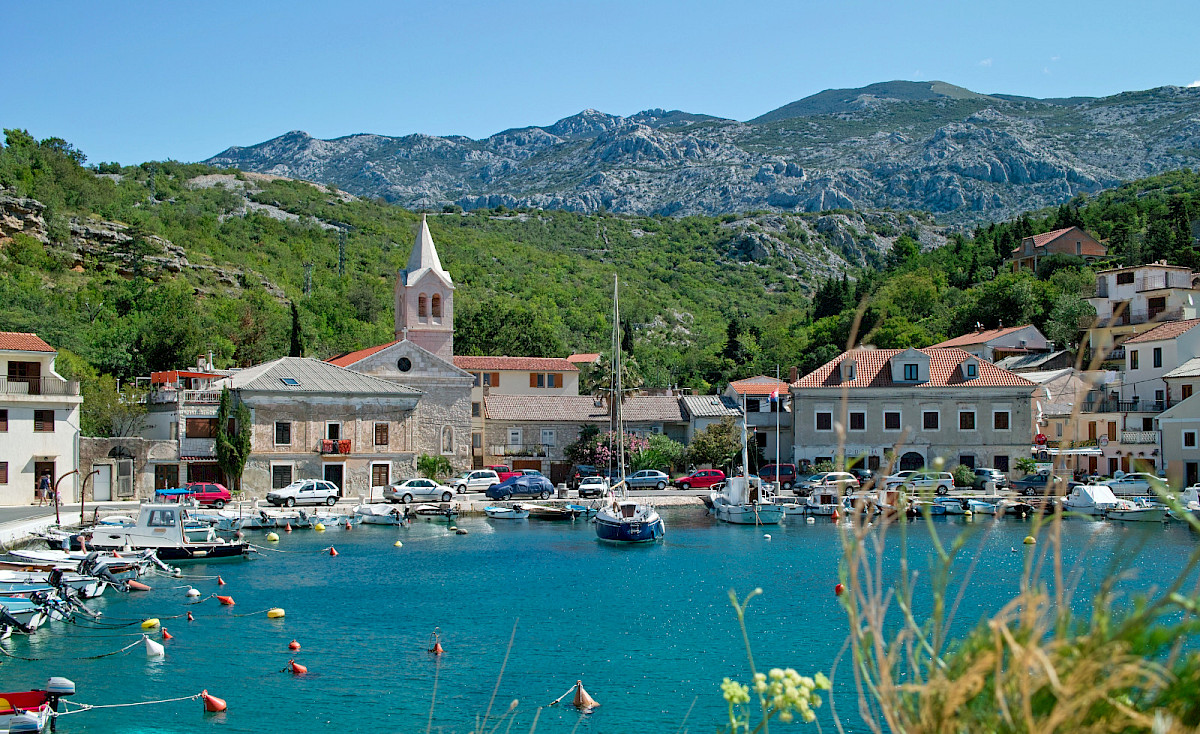
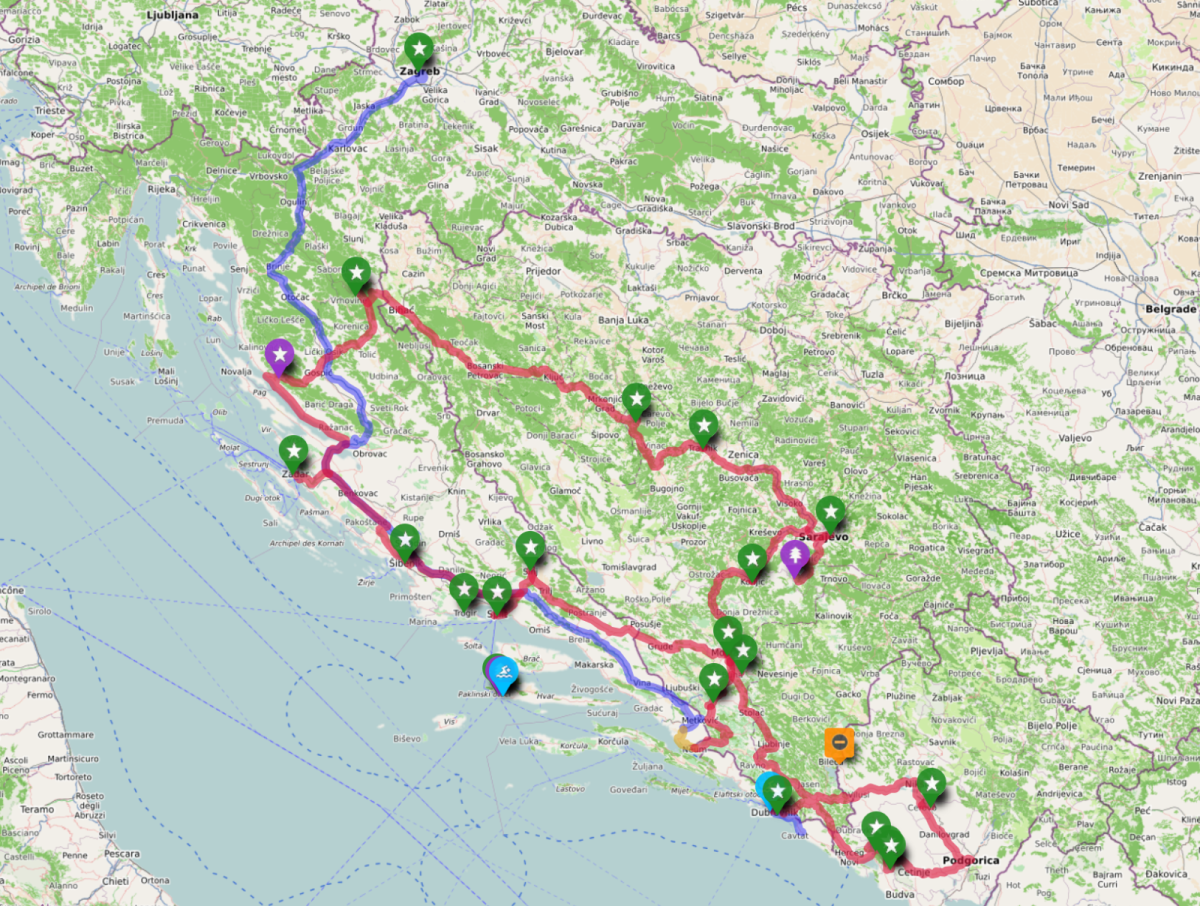
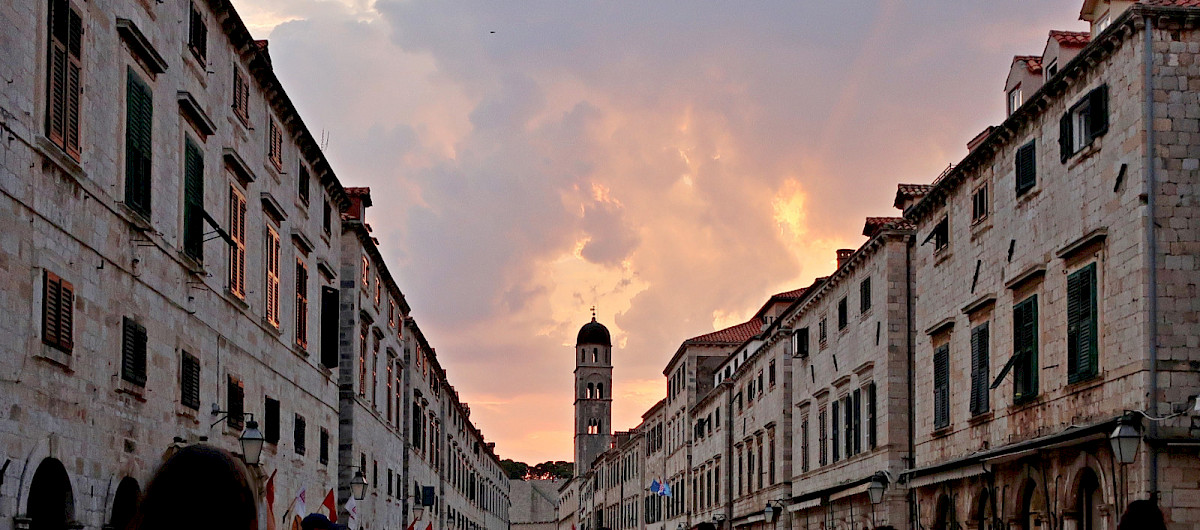
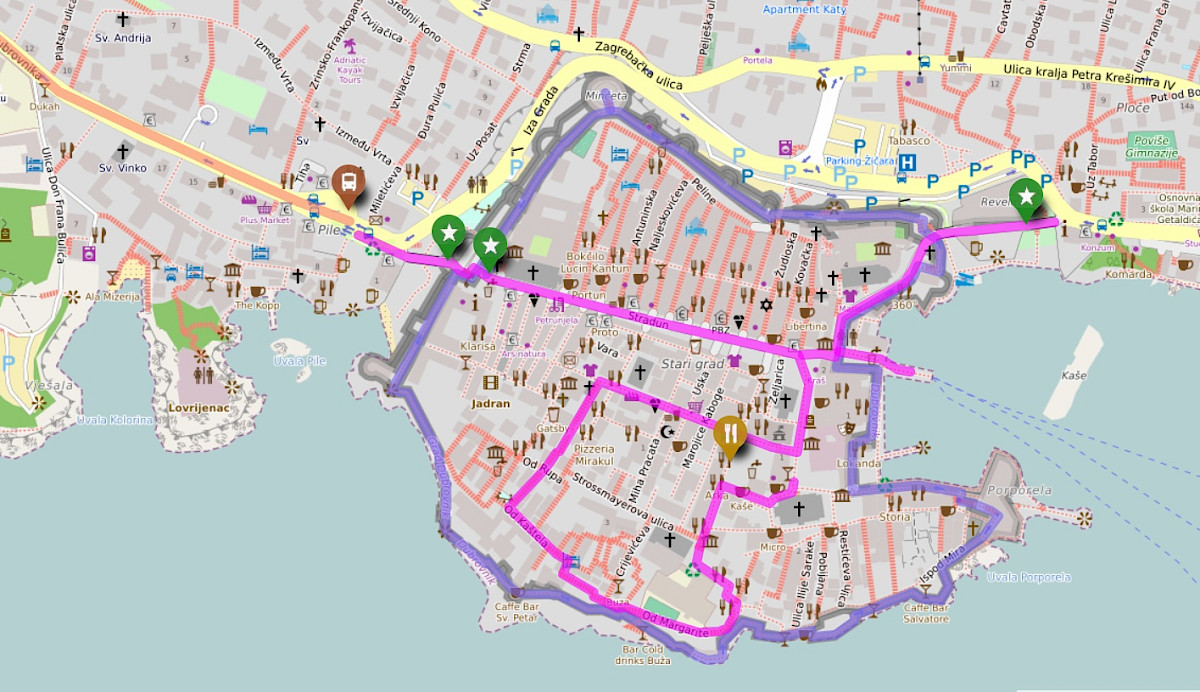
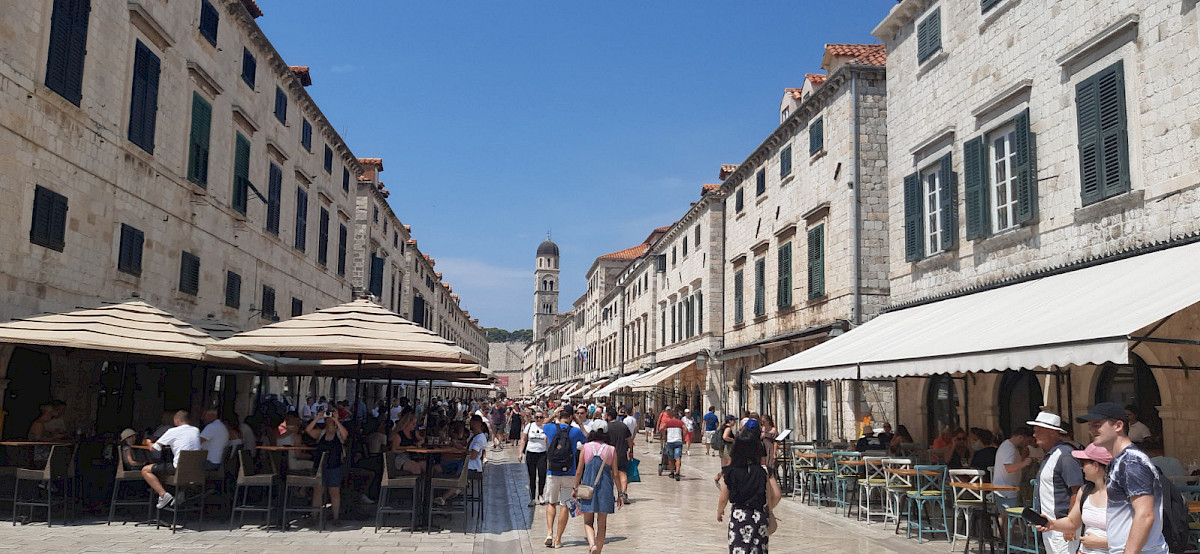
{_blank}](/site/assets/files/4520/dubrovnik_stairs_alt3.1200x0.jpg)
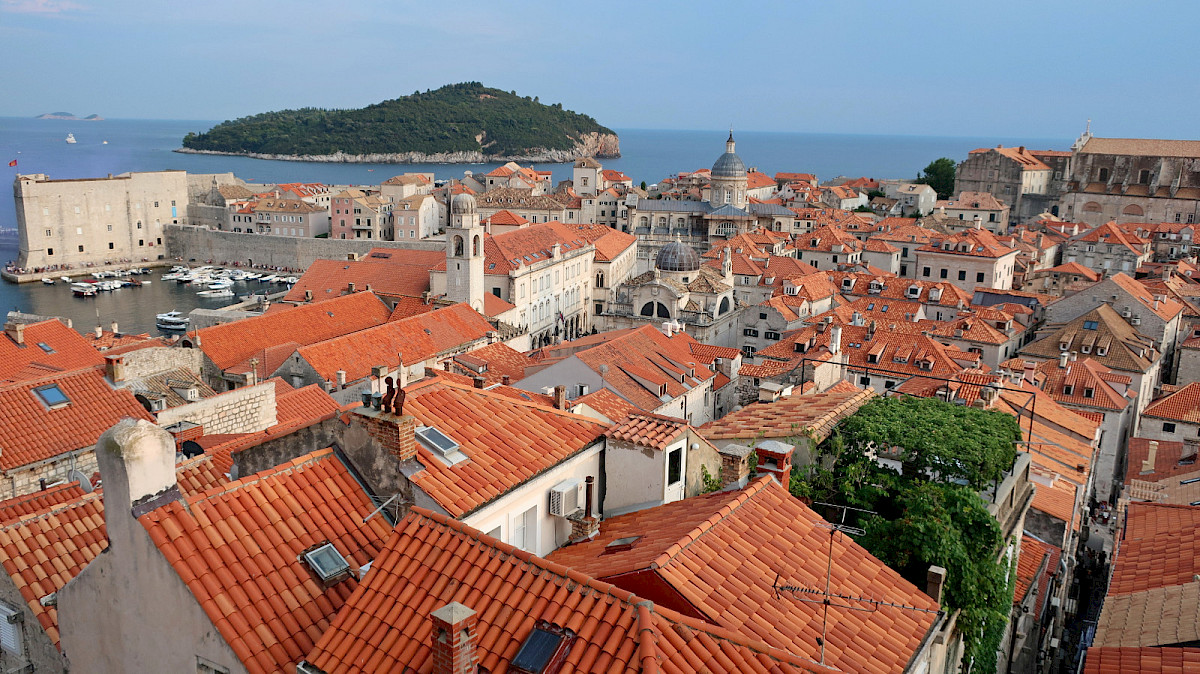
{_blank}](/site/assets/files/4517/dubrovnik_lapad-bay.jpg)
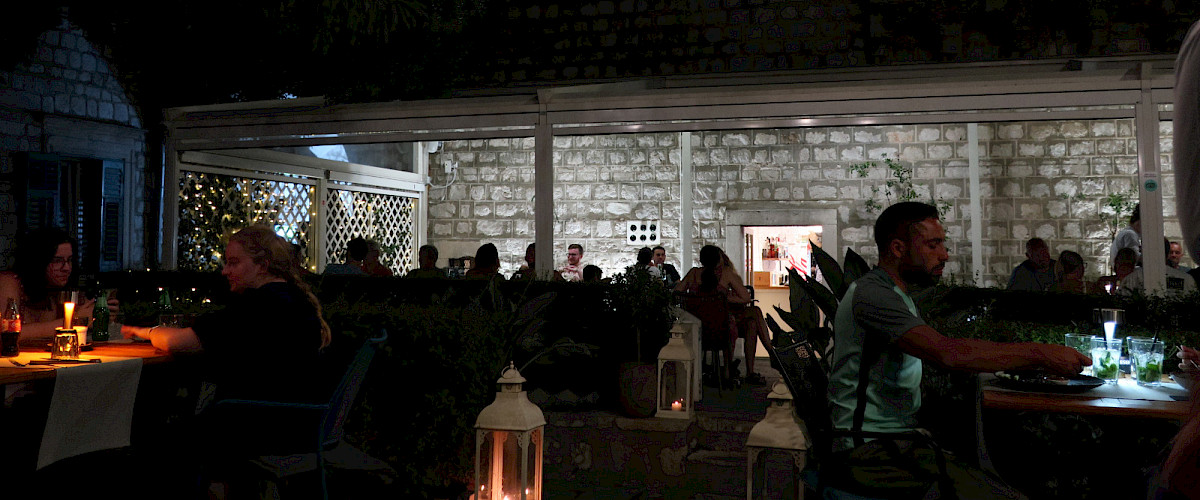
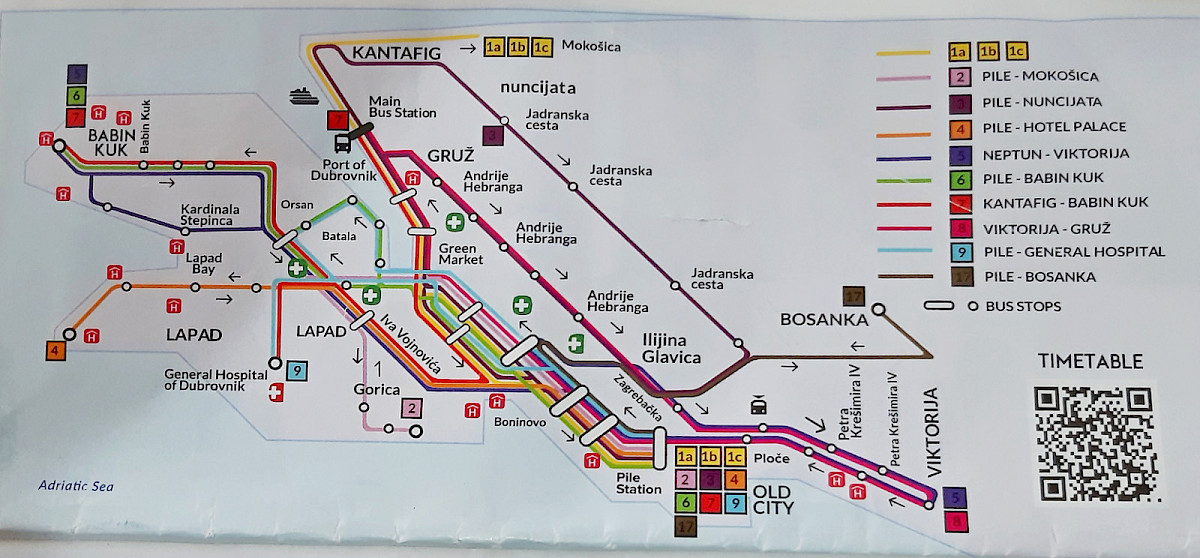
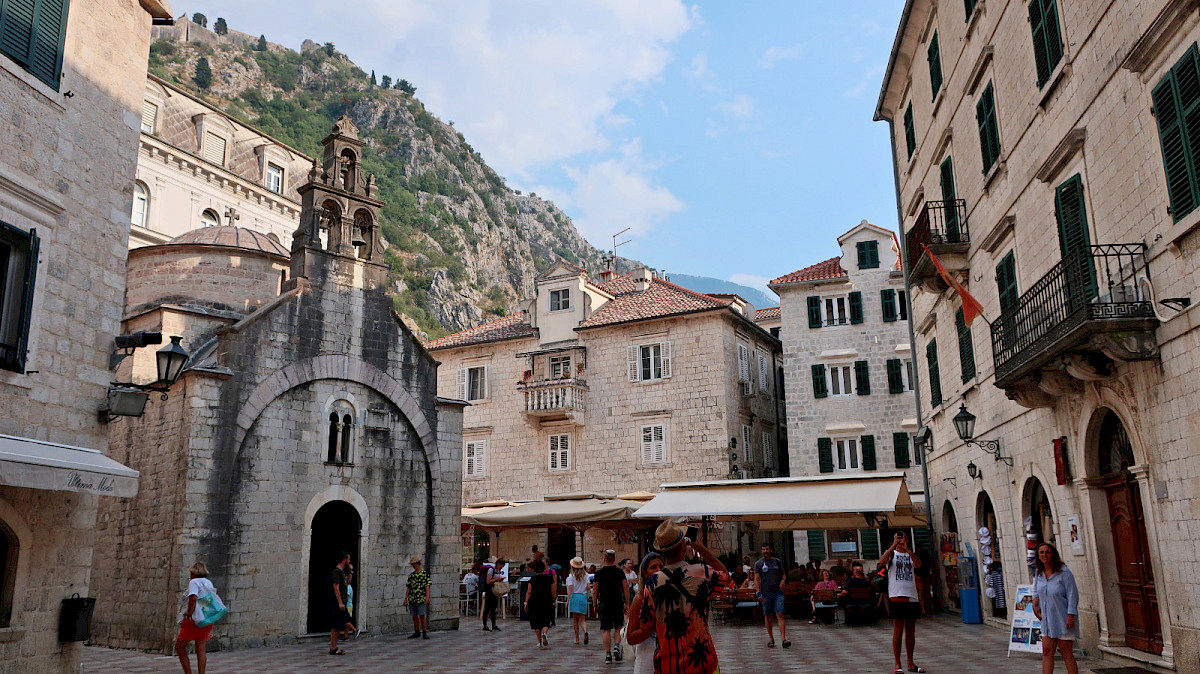

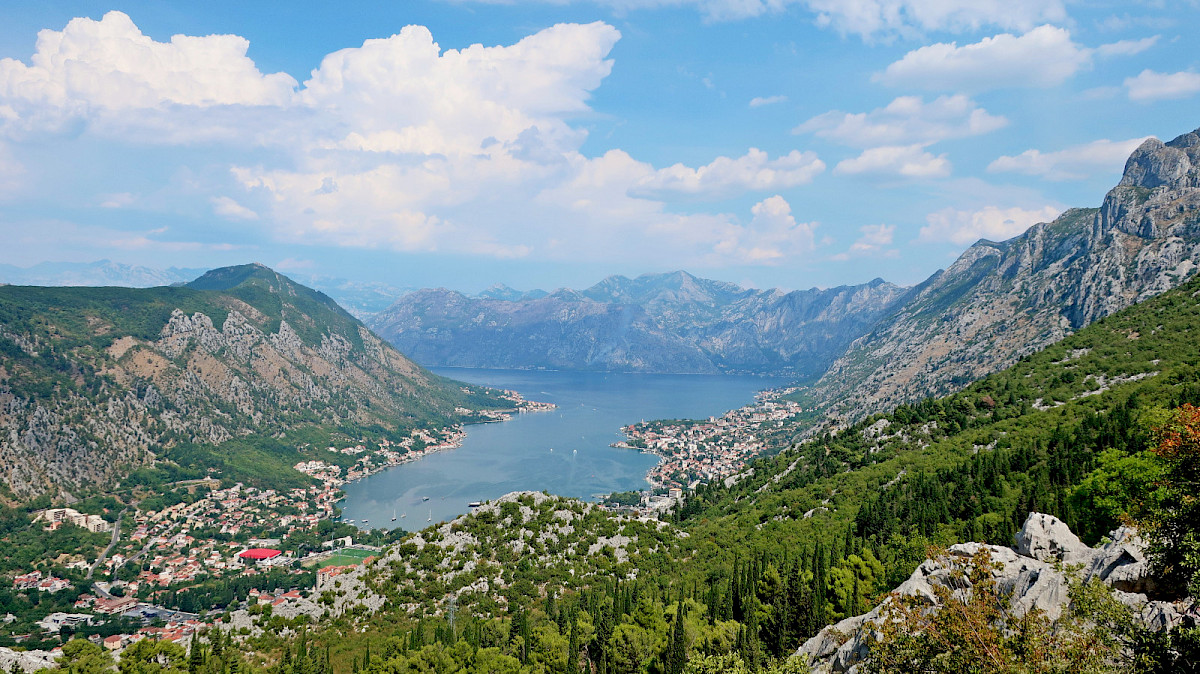
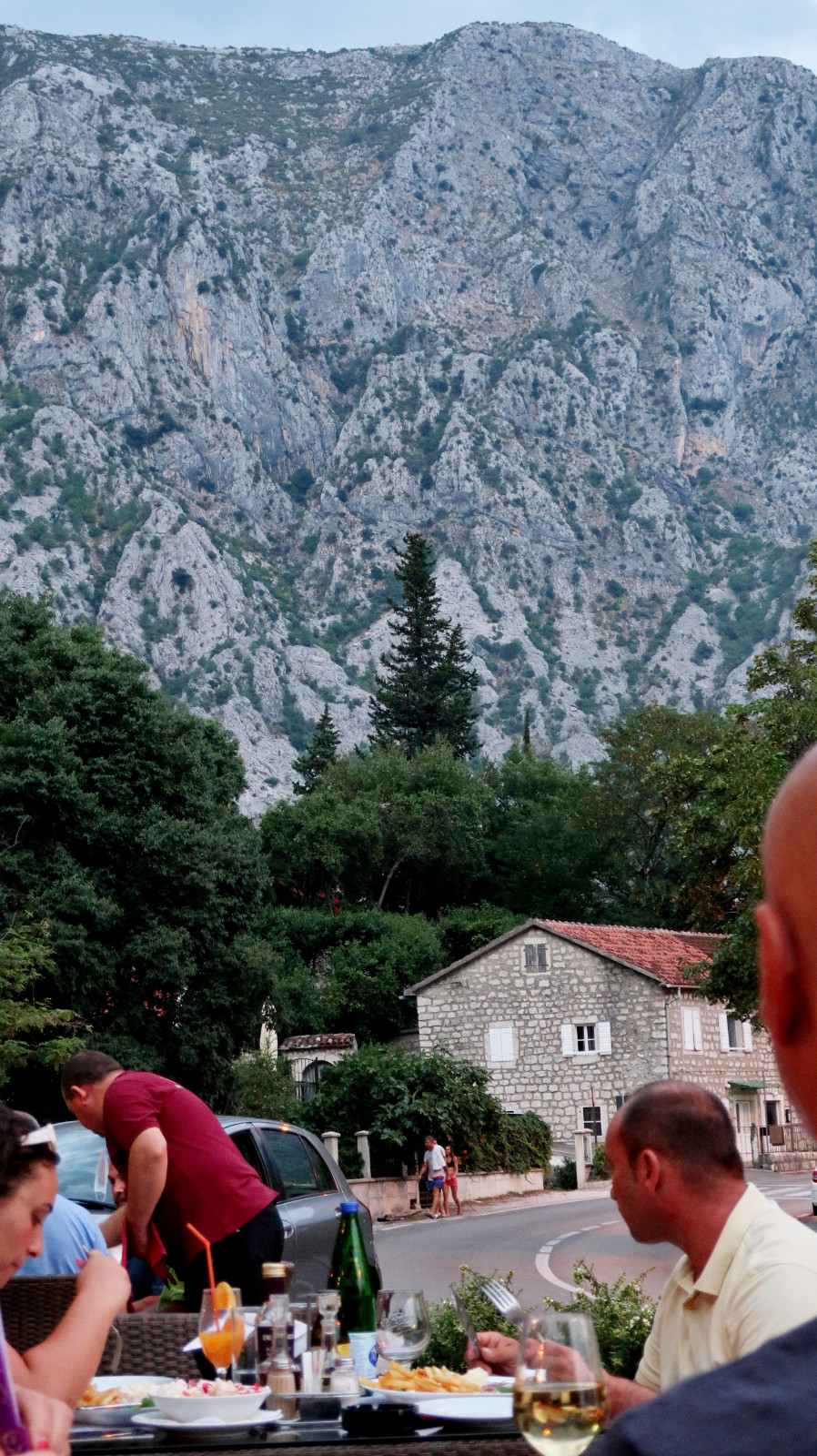
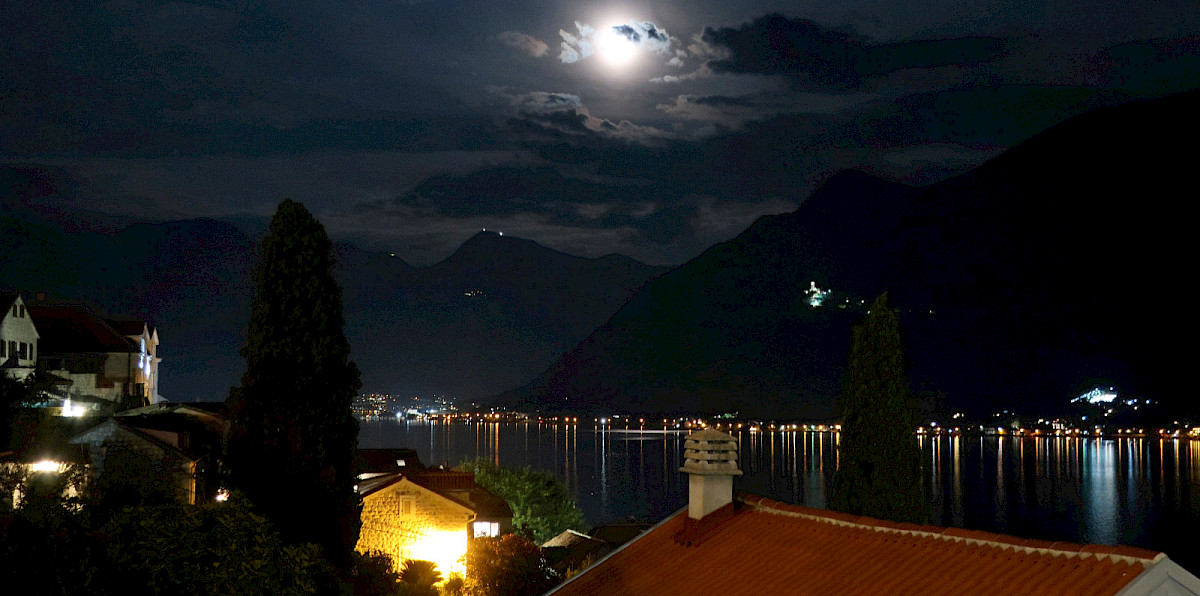


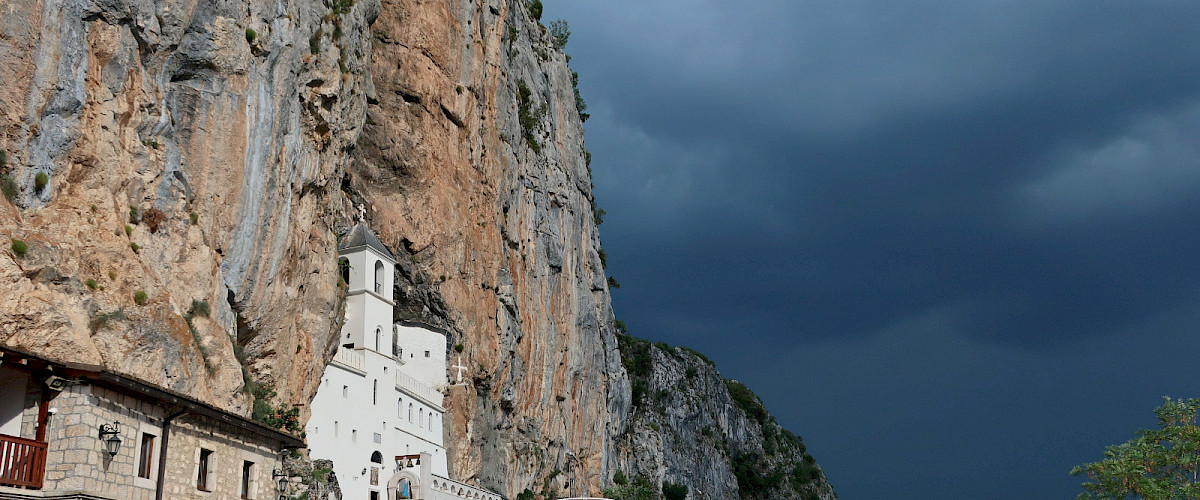
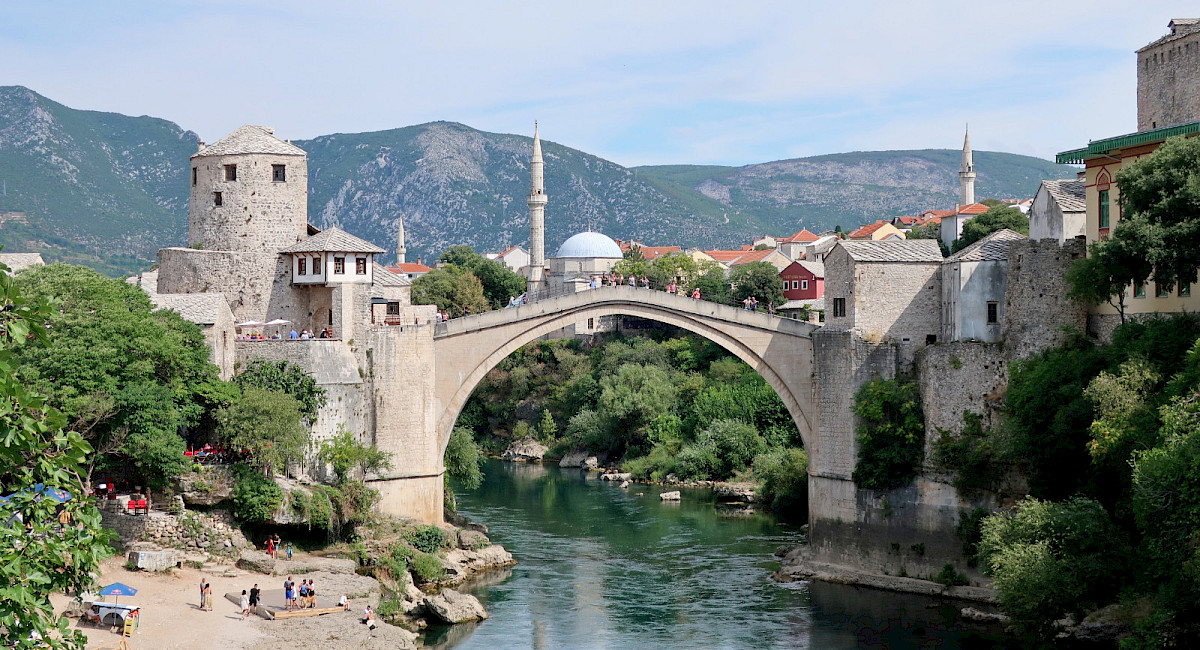
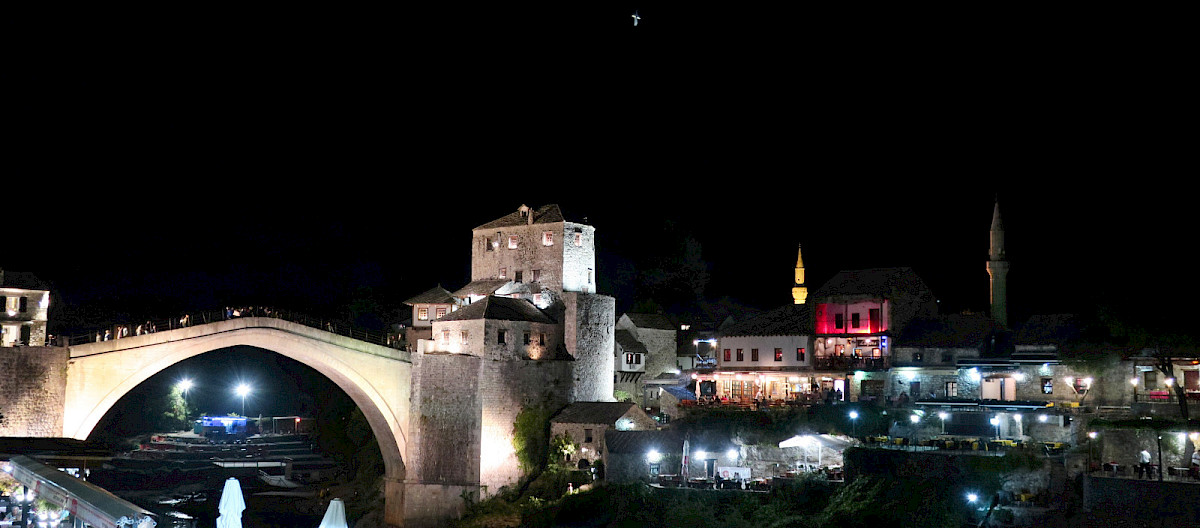
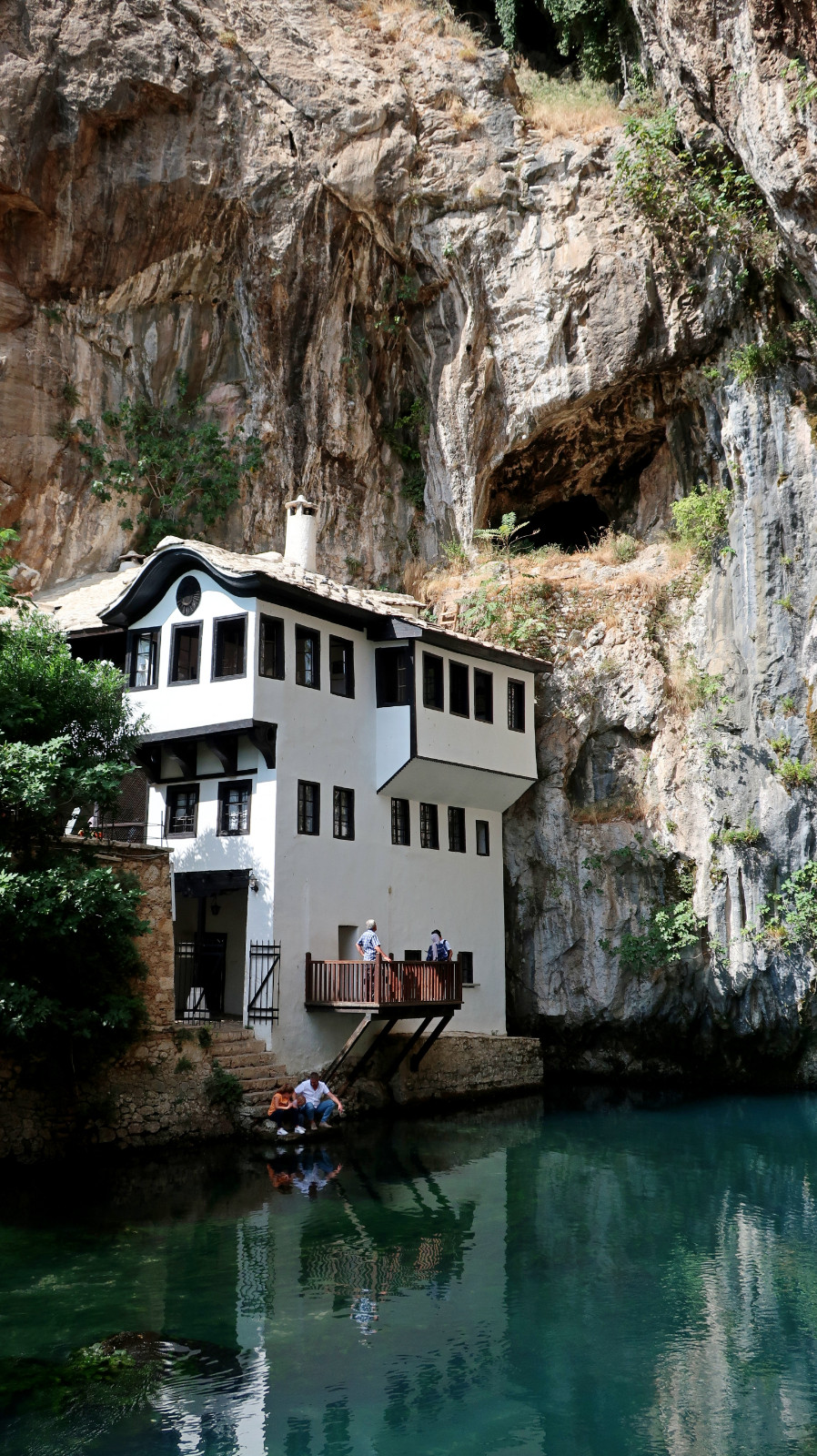
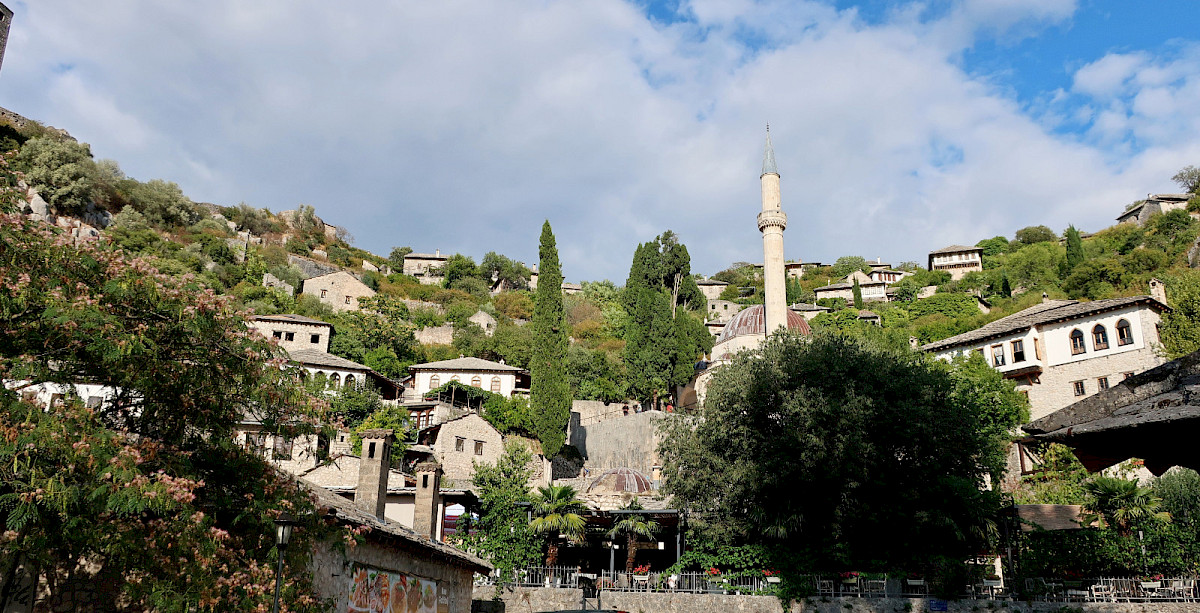
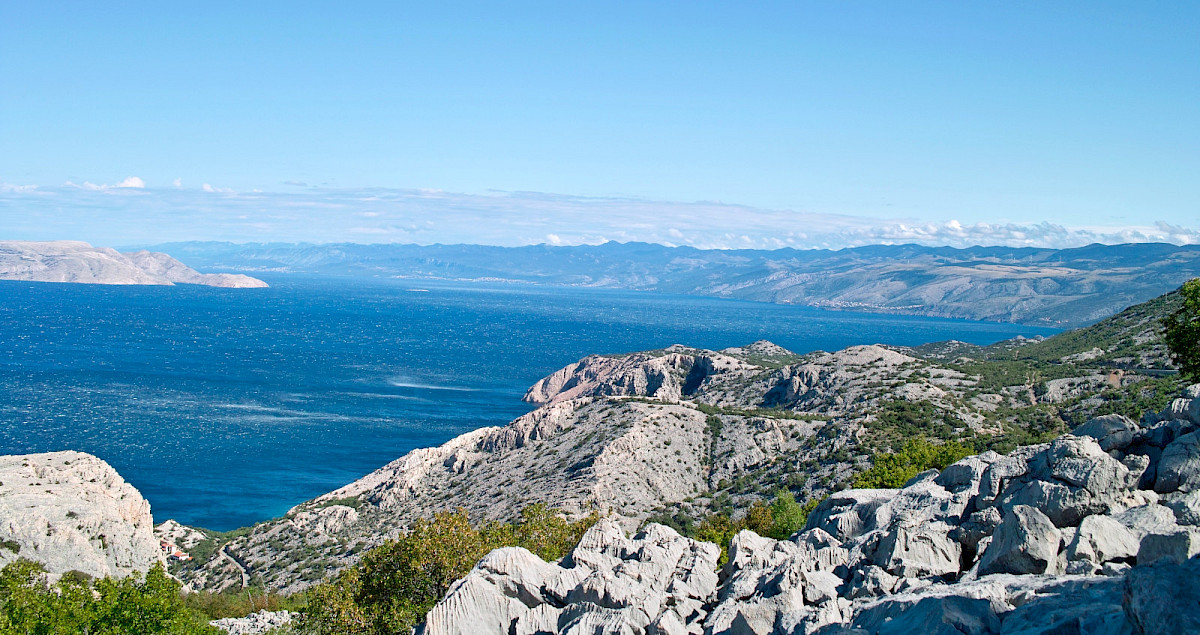
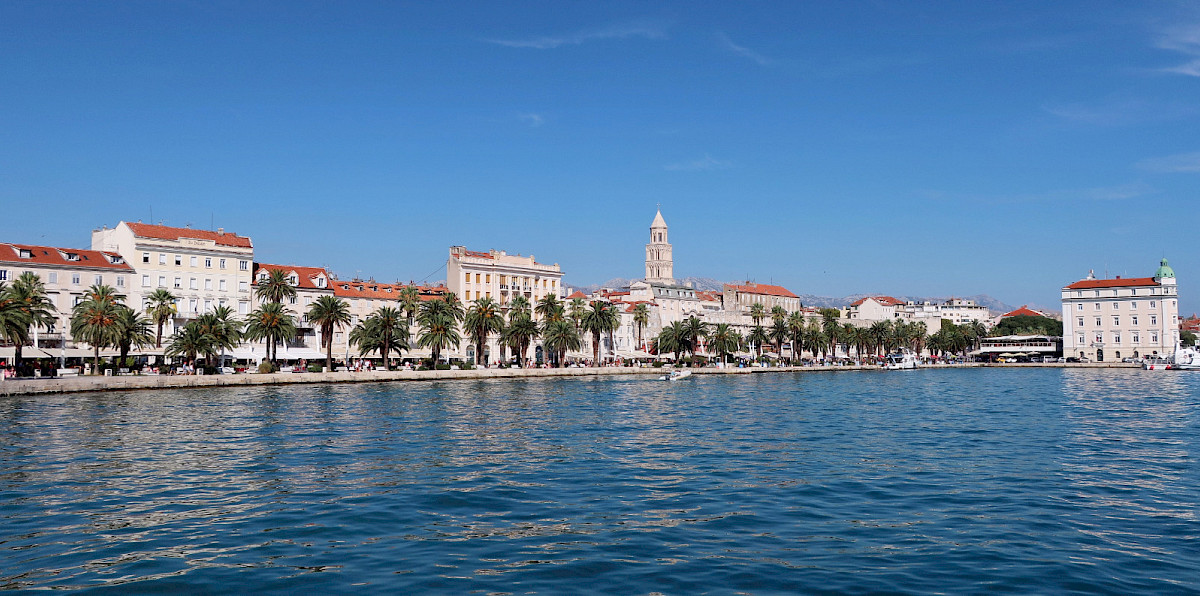
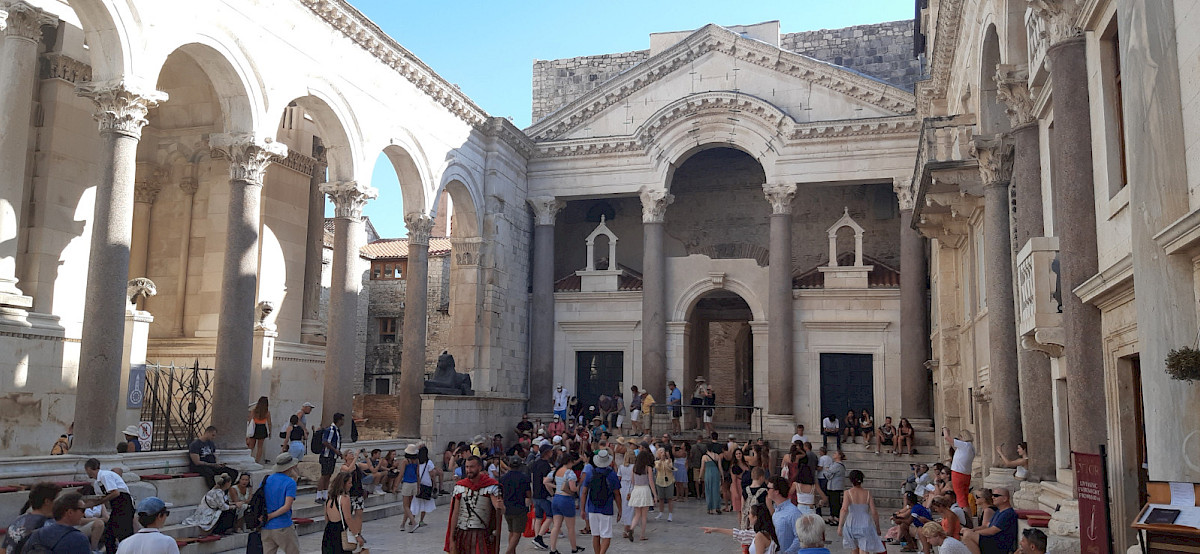
{_blank}](/site/assets/files/4564/sibenik.1200x0.jpg)
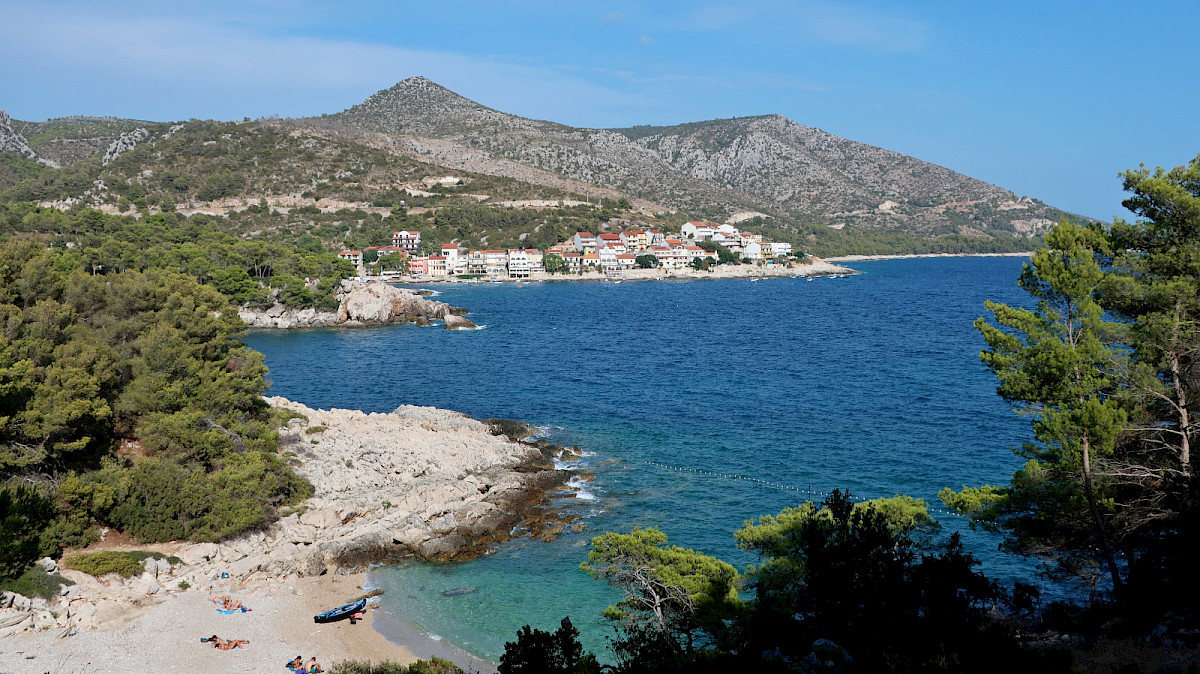
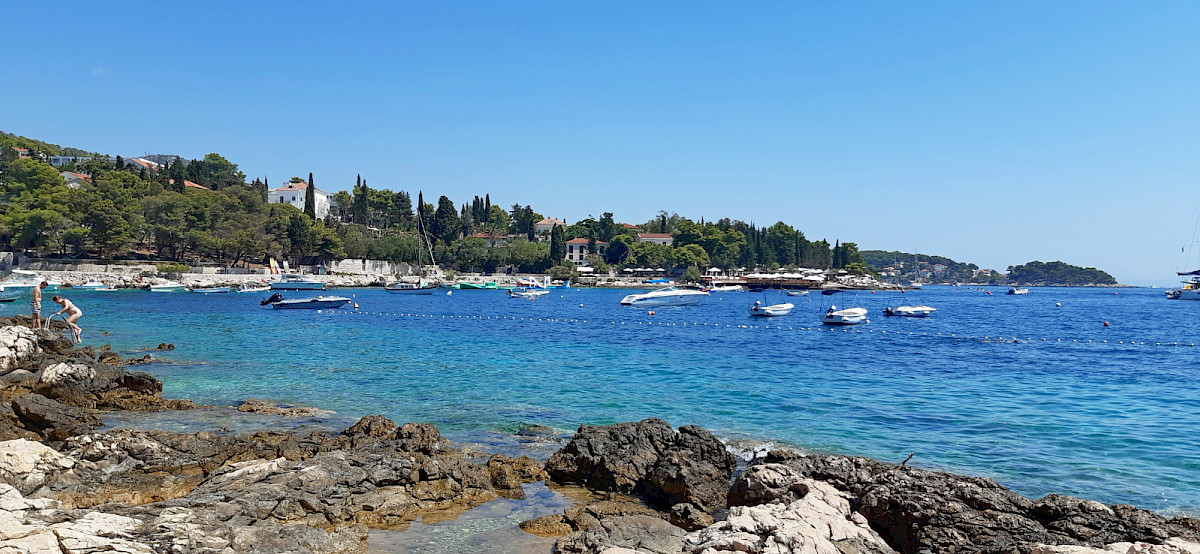


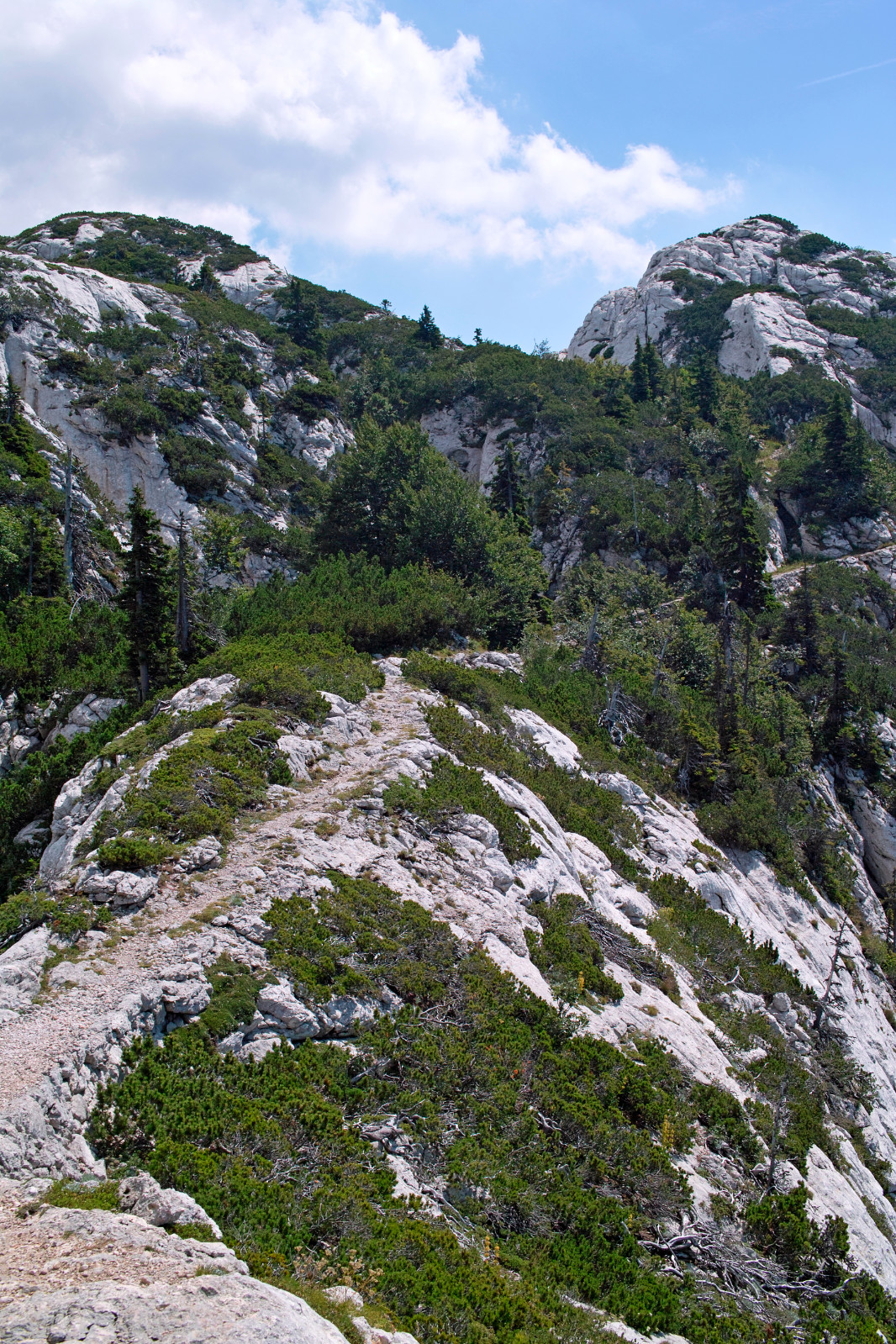
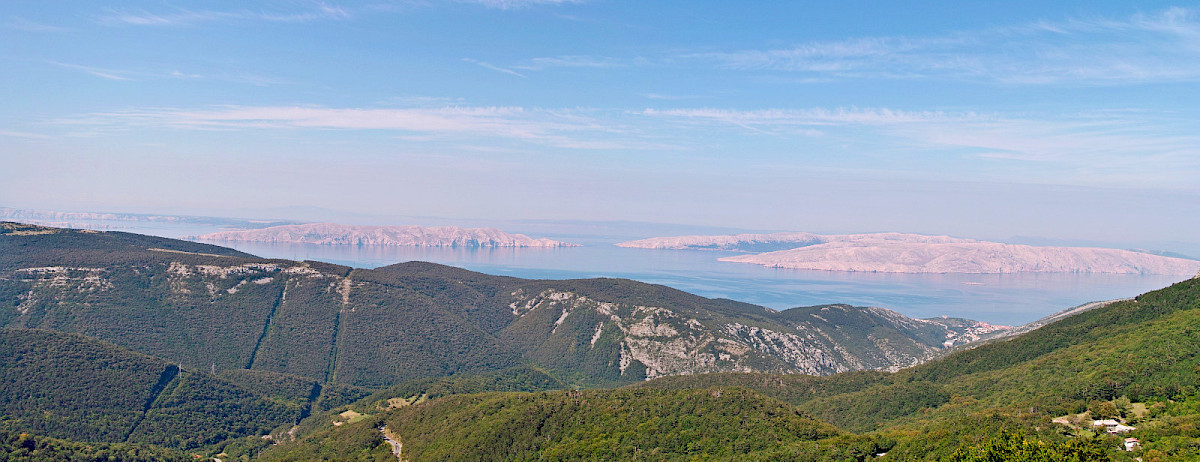
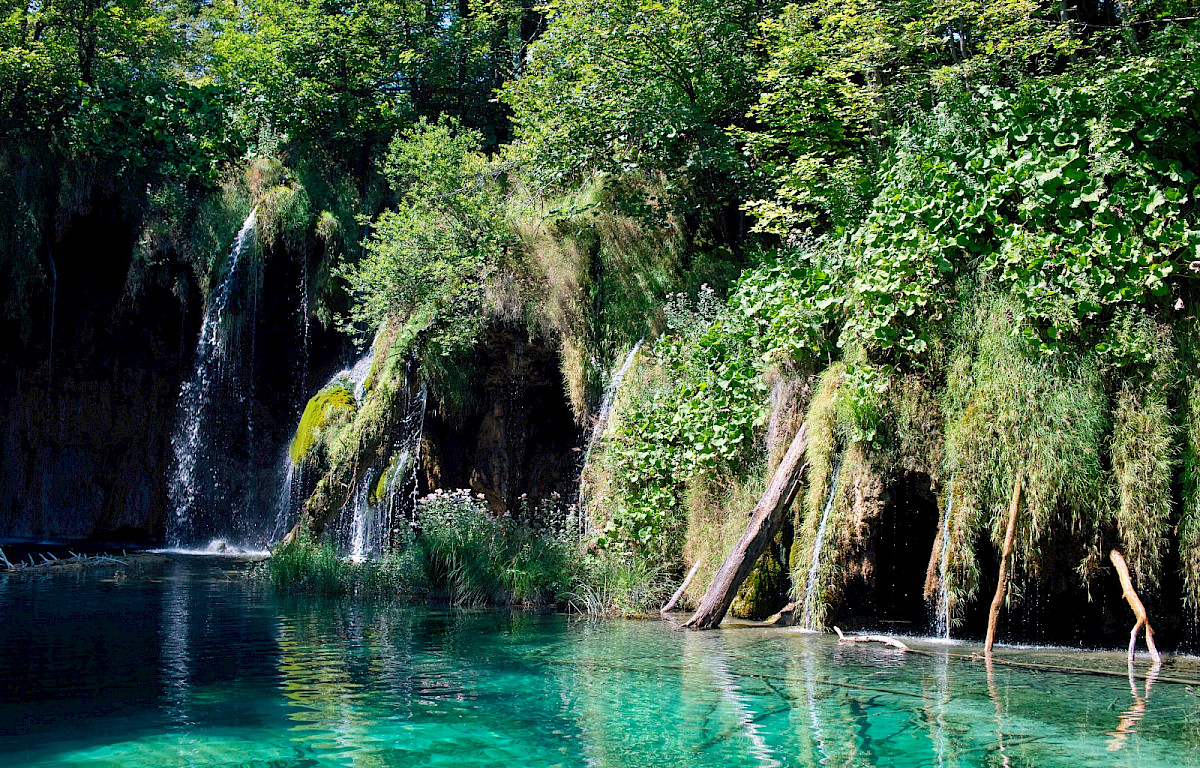
{_blank}](/site/assets/files/4576/plitvice_trail_e.1200x0.jpg)
{_blank}](/site/assets/files/4576/plitvice_trail_a.1200x0.jpg)
{_blank}](/site/assets/files/4579/sarajevo.1200x0.jpg)
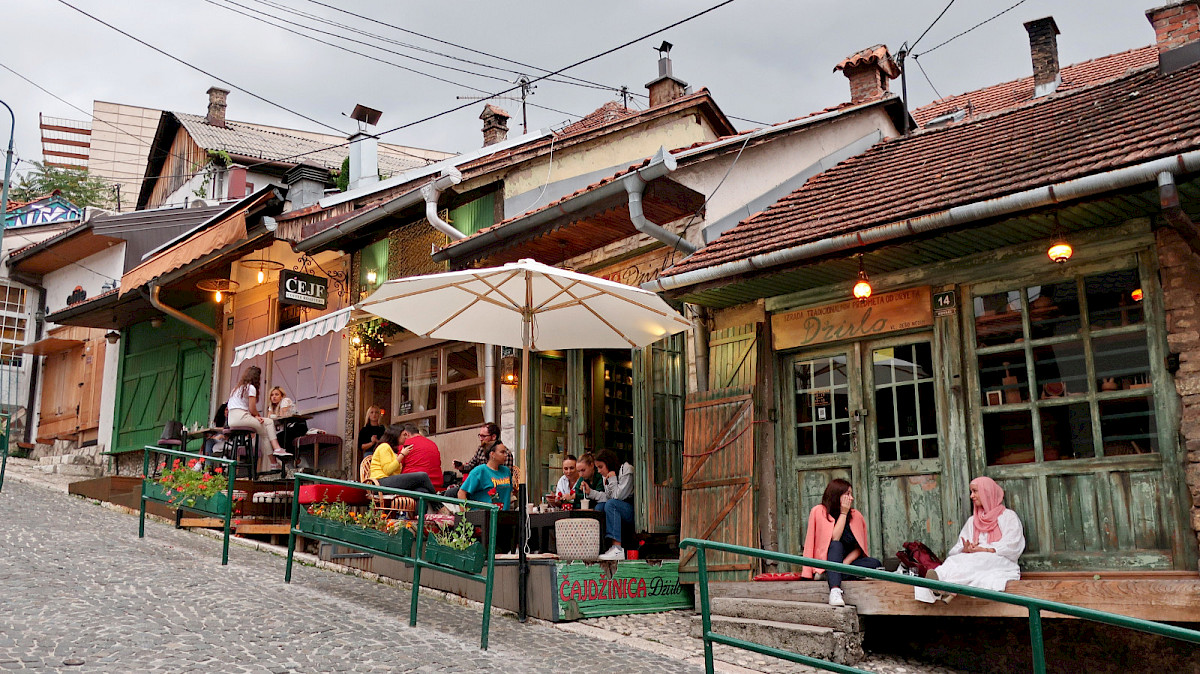
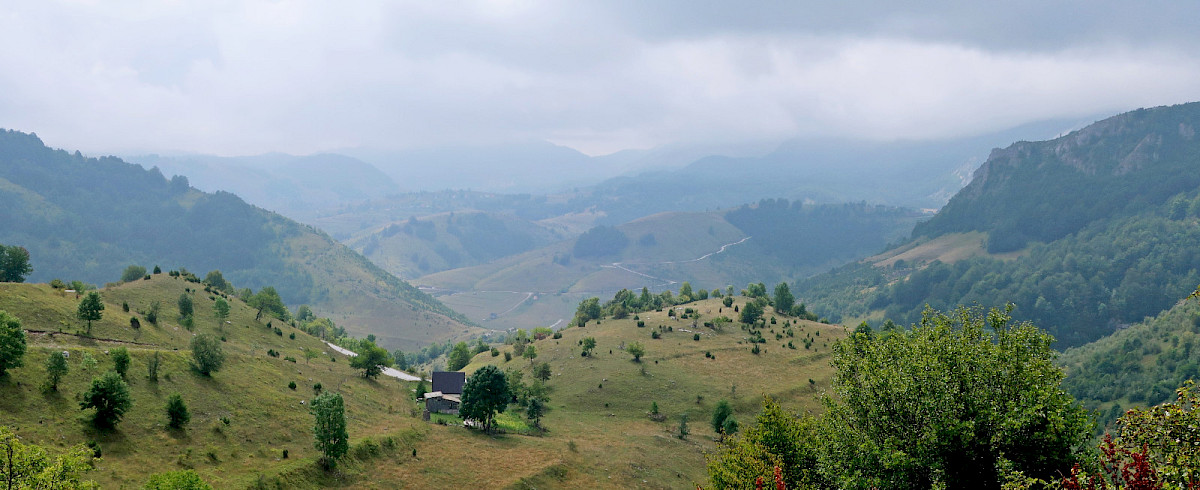
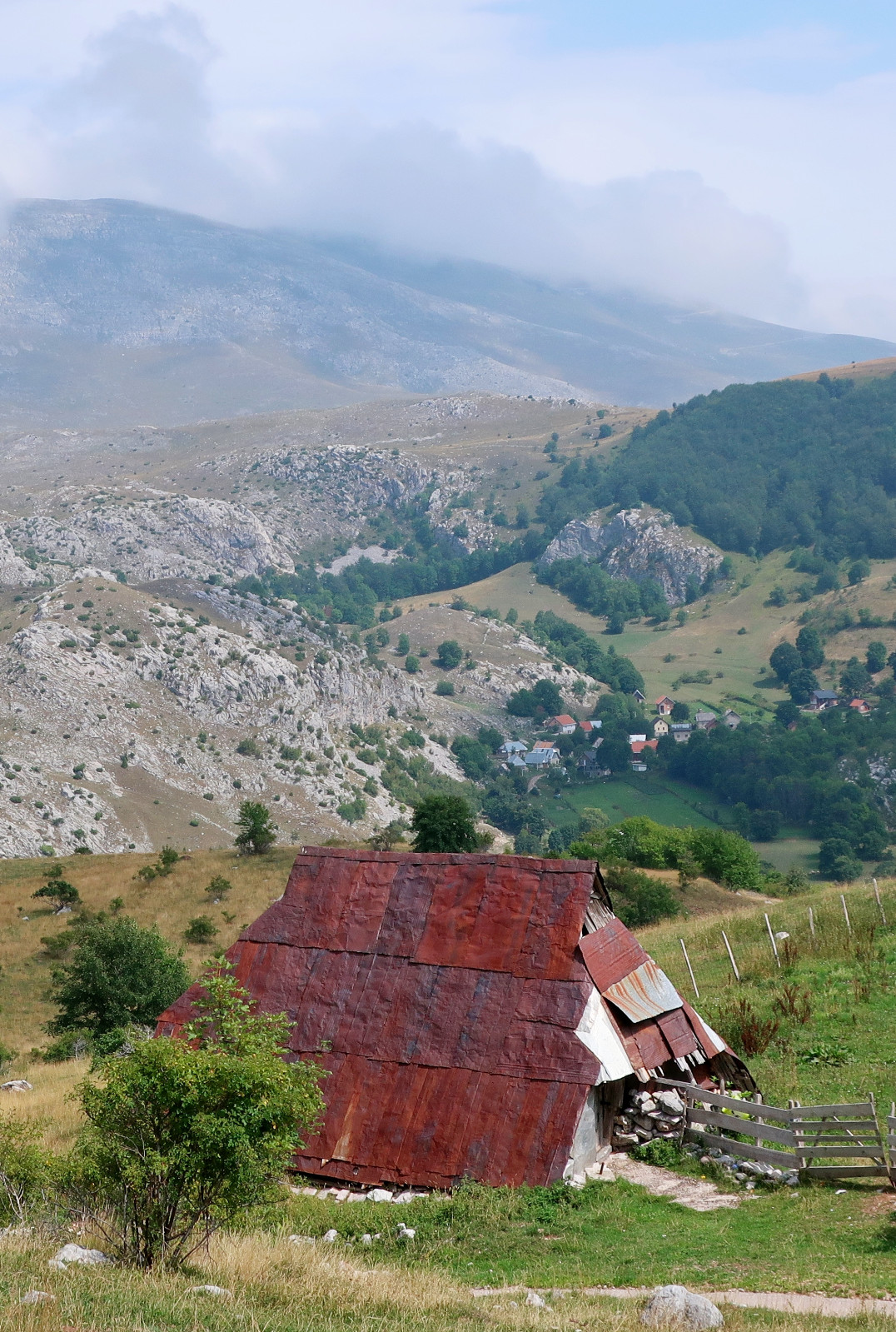
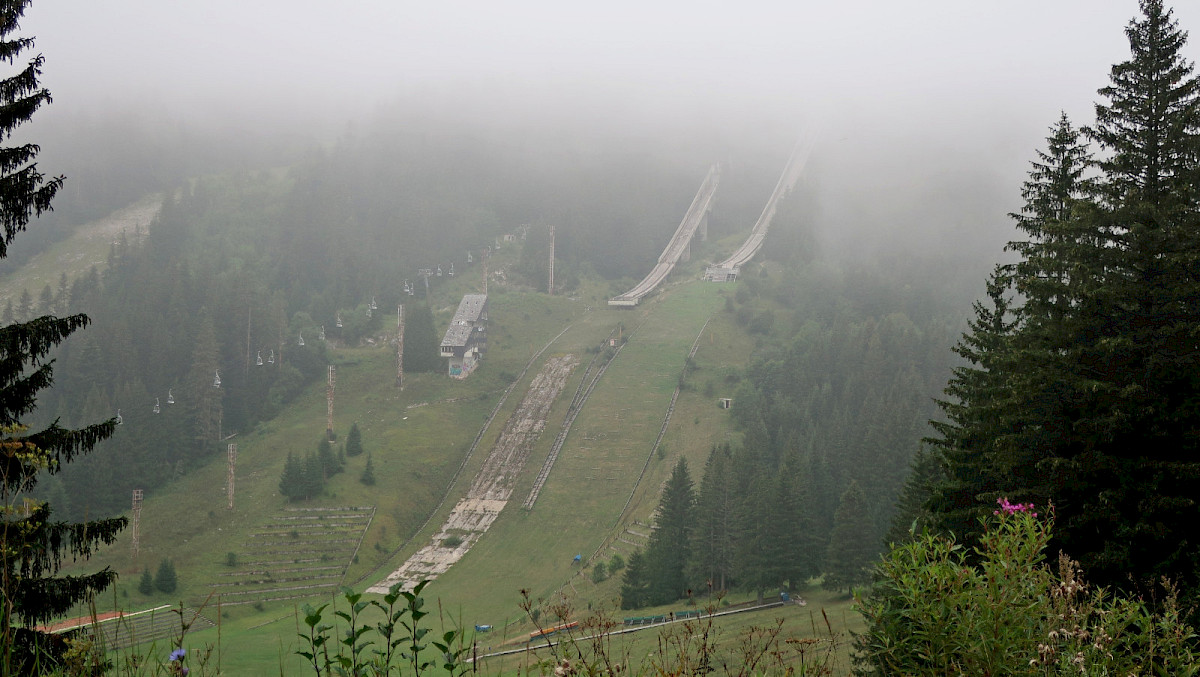
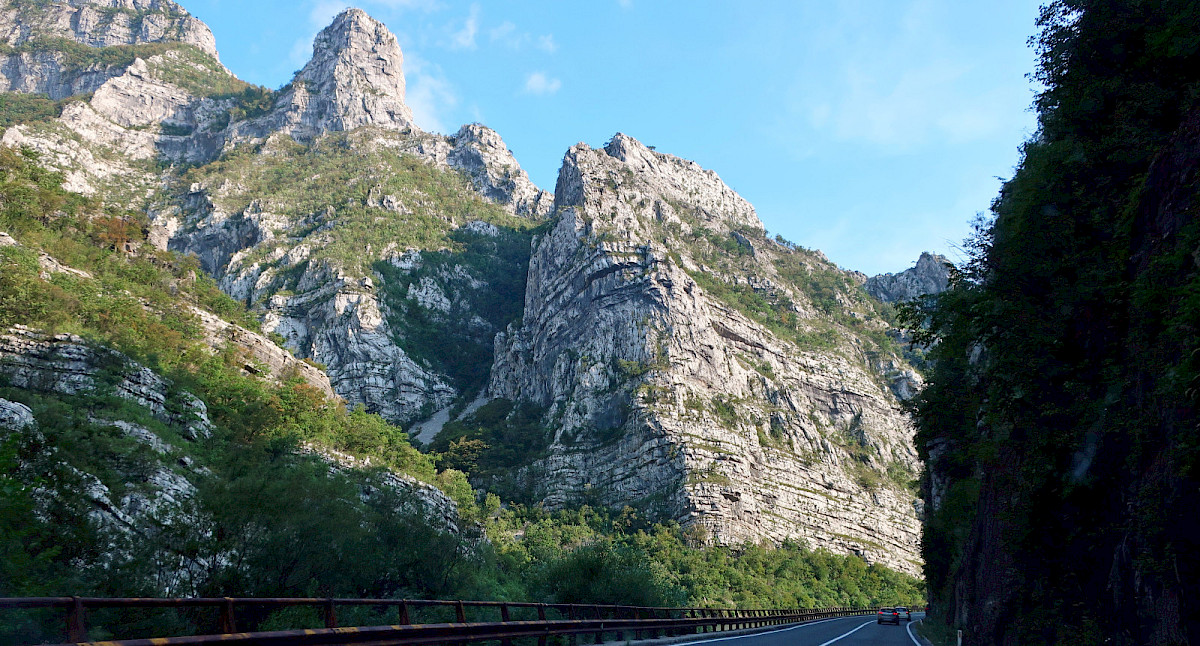
{_blank}](/site/assets/files/4597/konjic.1200x0.jpg)
